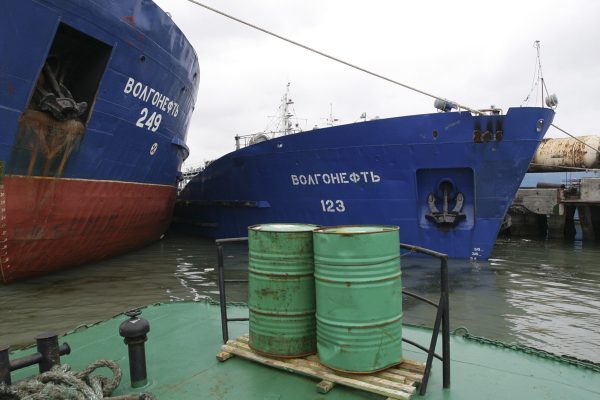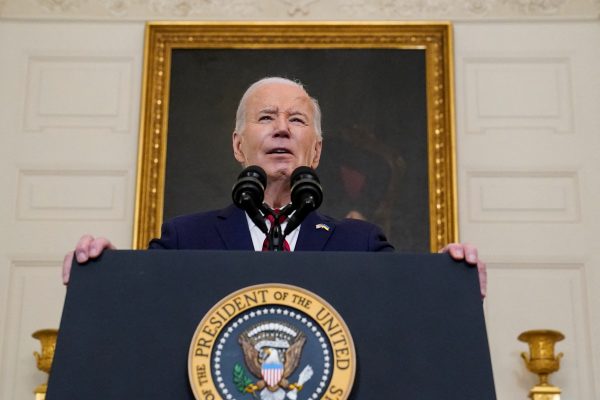Executive Summary
- Prompted by Russia’s war in Ukraine, the countries of the Baltic Sea region are belatedly building coherent security architecture, but revanchist Russia poses grave challenges. Time is short.
- Consensus about the gravity and breadth of the threat from Russia is emerging. Agreement about how to counter it is patchier.
- The military threat from Russia to the Baltic states casts a much wider shadow. Allies near and far must help with better plans and more weapons to deter, predict, forestall, and, if necessary, repel an attack.
- Getting non-military resilience right makes war less likely.
- Annual public assessments of the threat, and of the level of resilience, will raise awareness among the public and decision-makers, set benchmarks, and encourage exchanges of expertise.
- Fixing the region’s security means overcoming deep historical, economic, and cultural divisions. It is feasible, but at a substantial political and economic cost.
- A successful regional, multinational, and allied approach to integrated security would be a template for other NATO regions.
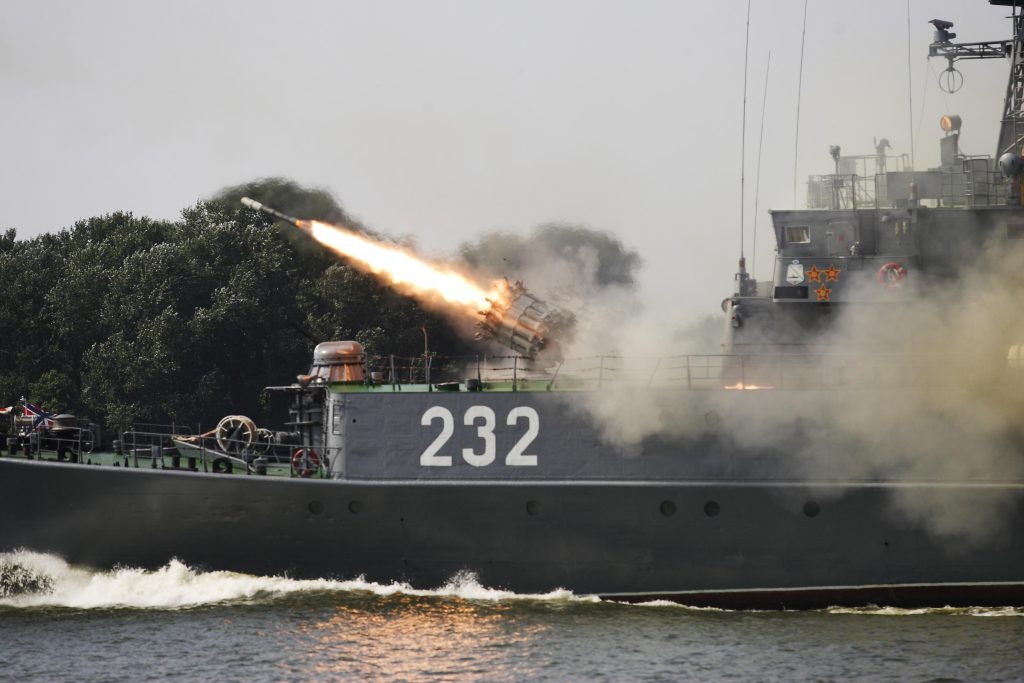
Chapter 1: Introduction
The Baltic Sea region is belatedly building coherent security architecture, but revanchist Russia poses grave challenges.
For the countries around the Baltic Sea, Russia’s full-scale invasion of Ukraine both highlighted a problem and created a potential solution to it.1 The Kremlin’s unambiguous demonstration of aggressive intent and capability underlined the risks of dismantling territorial defense after 1991: an approach pursued by Germany, Denmark, and Sweden. It also vindicated the long-standing security worries of Estonia, Latvia, and Lithuania. These three countries have no natural frontier to the east, no strategic depth, and a combined population of less than seven million. Their land area, of 175,000 square kilometers (km2), or 67,600 square miles (mi2), is roughly less than the Ukrainian territory seized by Russia in the early months of the war. The torment experienced by Ukrainians there, echoing traumas that are still in living memory for the Baltic states, has further solidified Estonian, Latvian, and Lithuanian resolve: Not one inch, not one soul, can come under Russian control.2
Yet when and if Russia, a nuclear-armed state of 140 million people, turns its attention away from Ukraine, Estonia, Latvia, and Lithuania alone cannot defend themselves. They are dependent on their NATO allies for defense and deterrence.
This cuts both ways. The Baltics depend on NATO, while the alliance’s credibility hangs on its ability to defend these three countries, its most vulnerable members. Yet since Estonia, Latvia, and Lithuania joined the alliance in 2004, NATO’s efforts have been handicapped by the region’s strategic incoherence. In particular, two important countries, Finland and Sweden, were not members of the alliance. This hampered everything from military planning and information sharing to exercises and logistics.
Now change is in sight. After decades of nonalignment, Finland joined NATO and Sweden is, at the time of this report’s publication, on the verge of accession. This marks a historical shift for these countries, for the region, for the European continent, and for the transatlantic alliance. These new members redraw the military map. Finland’s 1,340-km (832-mile) border with Russia is a new extension of NATO’s eastern flank. The Baltic Sea becomes a “NATO lake.” Russia’s access to the Baltic Sea is now constrained. Its trophy from 1945, the Kaliningrad exclave, becomes a potential hostage. Its other 500 km (310 miles) of coastline at the eastern end of the Gulf of Finland are subject to blockade from Estonia and Finland. NATO’s forward presence in the region, at least in Russian minds, potentially threatens the country’s second city, St. Petersburg. Any further development of NATO defense planning and military presence in the Arctic and the High North may prompt concerns about the crown jewels of Russia’s strategic nuclear arsenal, the submarine and other bases in the Kola Peninsula on the Barents Sea.
This presents difficult and delicate questions surrounding arms control, deconfliction, and strategic messaging. Finnish and Swedish NATO membership, and the resulting security integration of the region, also present a critical opportunity for the alliance and Nordic-Baltic nations to take a concerted, multilayered approach, coordinating their individual and collective threat assessments; shoring up civilian and military resilience; and identifying and remedying shortfalls in areas such as mobility, stockpiles, planning, and force posture.
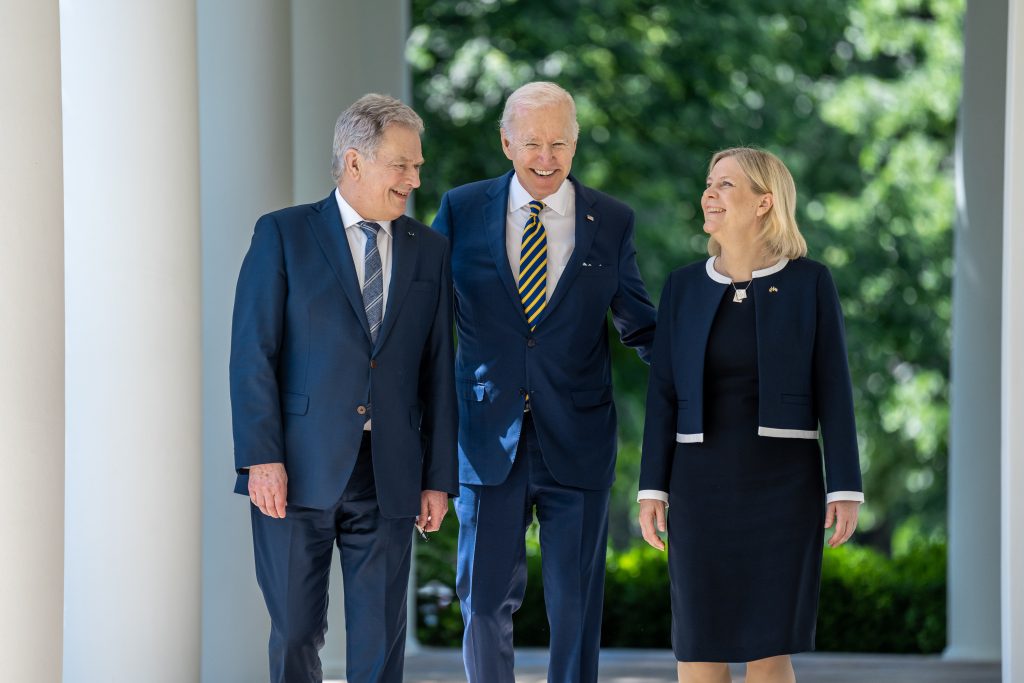
The pace of change is dictated not by the region’s own decision-makers alone, but by the threats they face. Following the first tentative step in 2009 with the formation of Nordic Defence Cooperation (NORDEFCO), the pace of Nordic and other regional defense cooperation has quickened, and Finland and Sweden have moved fast, if perhaps belatedly, to join the alliance. The most pressing questions now are not about the region’s security architecture but about the nature of the threat.
- How quickly can Russia reconstitute its losses from its war in Ukraine?
- How quickly will it be willing and capable of striking again?
- How might such hostile action manifest itself, given the Kremlin’s proven use of a wide range of levers of hard and soft power?
For reasons of alliance cohesion as well as their own security, the countries around the Baltic Sea must also mitigate risks from other competitors and potential adversaries looking to gain influence in the region.
Time is short, even alarmingly so. Within less than five years, Russia could reload to the extent that it could threaten at least the Baltic states.3 The question is whether the rest of the region, within and, if necessary, alongside NATO, can act fast enough to shore up its resilience, defense, and deterrence. The new regional defense plan agreed at the NATO summit in Vilnius outlines specific requirements, much of them classified, but hard questions remain.
- How do national priorities and perceptions fit in the regional picture?
- What capabilities and capacity investments are needed to secure the regional plan’s execution?
- What military and non-military resilience measures should the region prioritize?
- How do other threats from competitors and adversaries affect priorities?
Answers to these questions have a wider impact. A successful regional, multinational, and allied approach to integrated security in the region would be a template for other NATO regions, such as the Black Sea and NATO’s southern flank. Countries there could utilize their common challenges and perceptions to effectively increase defense and deterrence. Securing the Baltic Sea region also improves NATO’s efforts in the High North and Arctic.
This report examines the threats and opportunities arising from the fast-changing regional security picture and identifies priorities for the coming months and years. It follows CEPA’s two previous reports on the region, Close to the Wind (2021)4 and The Coming Storm (2015).5 It was published with generous funding from, and in partnership with, the Russia Strategic Initiative, US European Command. The report’s sponsors, along with the many people interviewed during its research stage, bear no responsibility for its content. ((For the purposes of this report, the Nordic countries include Denmark, Norway, Sweden, Finland, and Iceland (plus the Faroe Islands, Greenland, and the Åland Islands) and the Baltic states include Estonia, Latvia, and Lithuania. Although not officially part of the region, both Poland and Germany also play a role in the area. It is important to note that for the purposes of this report, there will be no discussion of Greenland and the Faroes, although they are a big part of Denmark’s defense efforts. The Åland Islands, also located in the Baltic Sea, are legally part of Finland but are demilitarized, making them legally challenging but not a focus of this report.))

Chapter 2: Threat Perceptions and Realities
The emerging consensus about the nature of the threat and how to counter it is still incomplete. Time to hurry up.
Since the end of the Cold War and the collapse of the Soviet Union in 1991, most countries in the Baltic Sea region have paid limited attention to defense. They have primarily focused on trade and diplomacy, prioritizing economic growth and the welfare state over defense forces, and civilian preparedness over total defense structures.
There are exceptions. Finland never dismantled its territorial defense capabilities; indeed, it boosted them and also preserved a renowned total defense program. Estonia maintained its defense spending at 2% of its gross domestic product (GDP) since 2012, and even in the depths of the financial crisis. Poland invested heavily in land forces, becoming the region’s military heavyweight. The Baltic states have had sharply differing threat perceptions from other countries in the region, voicing concerns over Russia’s hostile behavior toward its neighboring countries since the early 1990s.6
Russia’s trajectory toward domestic repression and external aggression features many inflection points, including the wars in Chechnya in 1994 and 1999, Russia’s assault on Georgia in 2008, and in 2014 Russia’s illegal annexation of the Crimean Peninsula and invasion of eastern Ukraine. But the full-scale invasion of Ukraine in February 2022 finally prompted a reevaluation of threat perceptions across the entire region. The two Nordic countries that had most neglected territorial defense, Sweden and Denmark, realized their vulnerabilities and ill-managed defenses. The focus sharpened on Russia’s mix of tactics, including regular and irregular warfare, as well as subthreshold attacks on civilians and civil infrastructure targets, and in the cyber domain.

Decades of insufficient defense spending in at least three of the four Nordic countries (Finland being the exception), as well as in Germany and to some extent the Baltics (Estonia being the exception), make the scale and tempo of needed changes daunting. They include development of military and civilian capabilities, logistics, and defense materiel stockpiles and production. More than a year after the Russian onslaught in Ukraine, countries in the region are publishing new national threat assessments and action plans, with increasing ambitions in security policy, defense planning, and procurement. Key features of these include the following:
- Russia’s threat of military aggression
- Russian hybrid attacks
- Insufficient defense spending
- Perceptions of potential erosion of the US defense commitment
- Belarus’s military alliance with Russia
Finland
The Finnish people and their institutions believed for decades that military nonalignment and balanced relations with Russia in trade and economics were the best ways to maintain stability. However, Finland never dropped its guard. With a population of 5.5 million, Finland has the strongest military and civilian defense among the Nordic-Baltic countries. In a country large in land area but small in population, conscription and reserves are the most cost-efficient way of mounting a credible defense. Finland has a fully mobilized field army of around 280,000 troops with hundreds of thousands of reservists, the largest ground forces in Europe after Turkey, and 1,500 artillery pieces.7
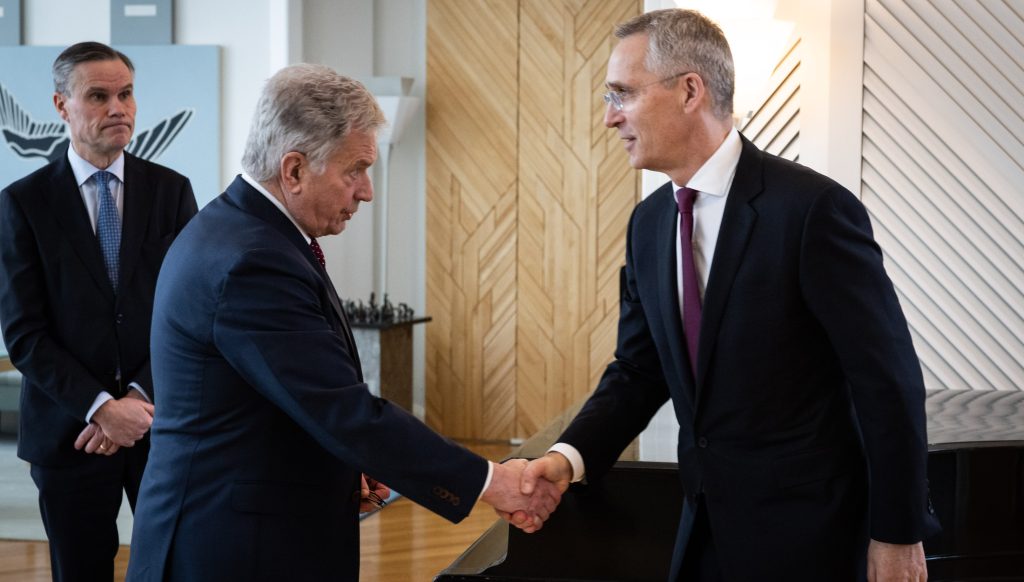
In addition to meeting the high costs of conscription, Finland has also invested in modern weapons systems:
- 64 F-35 fighter jets8 — $9.4 billion9 ;
- David’s Sling air defense system10 — $345 million;
- Overhaul and modernization of four Hamina class missile boats11 — $205 million12 ;
- Forty-eight K9 armored howitzers13 — $155 million14 ; and
- 35 Launch Rocket Systems — $91.2 million15
Defense spending is projected to rise to 2.38% of GDP in 2023, falling to 2% in 2024 and 2025.16
Finland also employs a comprehensive, whole-of-government approach to security in society (for a more detailed discussion on non-military resilience, see Chapter 4).
After February 2022, remaining illusions about Russia vanished.17 Reflecting the shift in popular sentiment, Finland’s government (jointly with Sweden’s) applied for NATO membership on May 18, 2022.18 This rendered the security assessment published in April 2022 outdated.19 The new government program partially updates the country’s approach to defense, stressing resilience through comprehensive security, and emphasizing the importance of relations with Sweden, Norway, and the Baltic states, within the European Union (EU), NATO, and bilaterally.20 Military exercises with NATO allies and partners since the mid-1990s are a solid foundation for increased interoperability. Moreover, Finland has in recent years intensified its naval and air cooperation with other countries, chiefly Sweden, but also in trilateral Swedish-Norwegian-Finnish and Swedish-Finnish-US formats.
This serves as a framework for integration into NATO both militarily and politically.21 The practical changes will include better military and civilian logistics within Finland and among the Nordic countries. The mindset shift is perhaps bigger. It entails a deep societal change in thinking throughout society, chiefly within defense. Finnish defense forces must learn to accept orders from allied commanders, and be ready to participate in the defense of allied territory, including the Baltic states, and rehearse this defense in exercises.
Finnish Lessons
- Defense cooperation with Sweden and Norway gives Finland the strategic depth it needs. It is therefore essential that all three countries belong to NATO.
- The US is a key bilateral partner in the closely related areas of defense, disruptive technology, and trade.
- Finnish naval capabilities need reinforcement from Sweden.
- Finland’s invasion-focused defense planning needs to be developed to meet NATO defense planning needs.
- Finnish defense forces must adapt to foreign command and to exercising the defense of other allies.
Sweden
In critics’ eyes, two centuries of lasting peace have left Sweden “peace damaged” (fredsskadad) (i.e., unable to understand on a societal level what is required to strengthen defense operations within the country at all levels of government).22 In the 1990s, Sweden decided to move away from its Cold War–era posture of strong defense, based on conscription, heavy military capabilities, and “total defense” — the template for Finland’s “comprehensive security.” Instead, Sweden adopted a highly trained but small professional army designed for expeditionary tasks, such as crisis-management operations, while most defenses against foreign influence operations and subthreshold threats were dismantled.
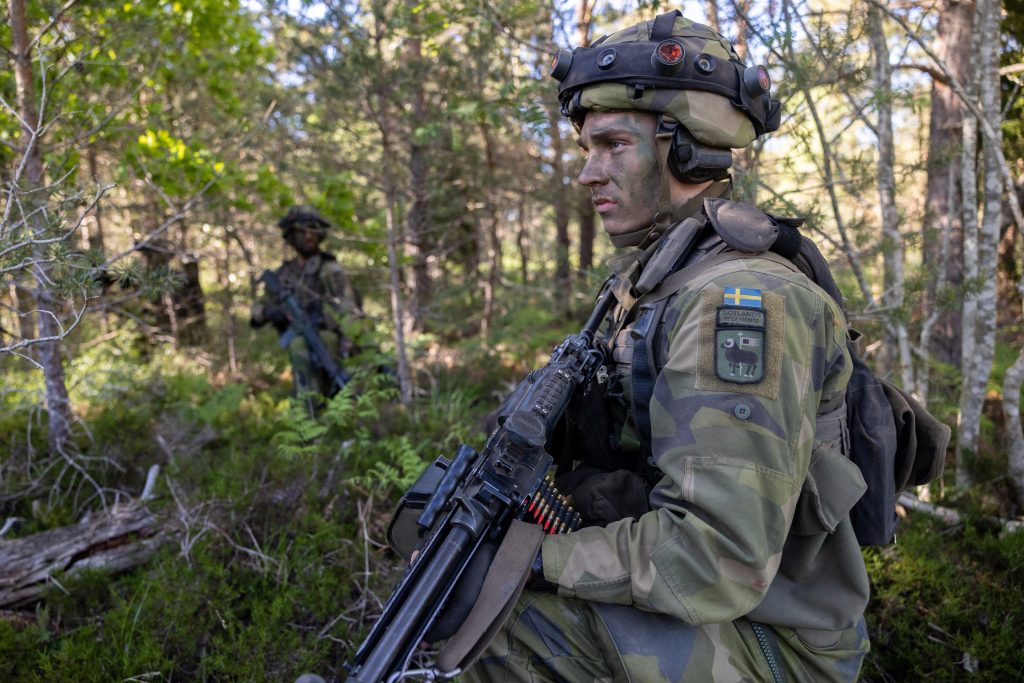
The Swedish Defence Commission submitted a midterm report in April 2023 that set out requirements to reinstate “total defense,” guidelines on increases in defense spending, and ties with NATO.23 Sweden now plans to increase its defense spending to 2% of GDP by 2026 and reach a 90,000-strong force by 2030 (up from 24,600 in 2022) and has reintroduced conscription. The commission reports progress being made in force projection on the strategically located island of Gotland (see Box 2 in Chapter 3) and the formation of three new brigades of around 5,000 troops.24 Experts, however, warn that overall progress is too slow and hampered by regulations and bureaucracy, imposed by labor and environmental laws designed for the now-gone era of peace.25 The commission proposes a new Swedish defense bill to be adopted in 2024, one year earlier than planned.
The Swedish Defence Commission submitted another report on Sweden’s security policy to Defense Minister Pål Jonsson in June 2023, entrenching the deep doctrinal change brought about by Russia’s war in Ukraine.26 The report states that an aggressive Russia has set itself for a long-term conflict with the West and this reality should determine Sweden’s focus on total defense and capability to defend its territory against an armed attack as part of NATO. It also states that, unlike Russia, China does not pose a direct military threat to Sweden, but its territorial claims are cause for concern in the Indo-Pacific region, linking it with the deteriorated security situation in Europe.
Sweden’s future NATO membership may lend Sweden valuable insights into how to proceed with its rapid change in defense posture and planning. All the while, NATO itself with its 151 committees poses a huge challenge in acclimatization for the entire civil and military servant corps, political elite, and research communities of both Sweden and Finland.
Notable Swedish defense procurements include the following:
- Patriot air defense systems — $1-3 billion27 ;
- Upgrade of entire Gripen fighter jet fleet — $336 million28 ;
- Next-generation Light Anti-tank Weapons (NLAW)29 — $88 million30 ;
- Assault rifles, sniper rifles, and ammunition — $85 million31 ; and
- Twenty 6×6 Common Armored Vehicle System Armored Personnel Carriers (CAVS/APCs)32 — $21.2 million.
Norway
Norway joined NATO as a founding member in 1949.33 Defense forces swelled to 350,000 troops in the 1950s and 1960s and were transformed in the 1970s into a small force of professionals with high-end military capabilities. Norway reintroduced universal conscription in 2015, and a specialist corps in 2016 for noncommissioned officers. It has raised defense spending since 2019, but the Norwegian Defence Commission in May 2023 called for significant increases in defense spending in an “extremely challenging” security environment.34 It outlined a long-term vision in defense in which the following threats to the security of Norway are considered:35
- Potential diminishment or withdrawal of US security guarantees/leadership. With China posing a “pacing challenge” to the US according to the US 2022 National Defense Strategy, focus on the Indo-Pacific may pose consequences for Europe.36 Much depends on the outcome of the war in Ukraine, which China is following closely as it builds its military posture.
- Russia’s aggressive military posture and a possible chaotic domestic political situation. If such a shift takes place, risks arise for the region in terms of instability and security, much as was the case during the 1991 dissolution of the Soviet Union and the subsequent coup attempt.
- China asserting power out of area. The possibility of a large out-of-area conflict caused by myriad factors including climate change, population growth, and migration flows is increasing. Long-term commitments such as the Afghanistan conflict may no longer arise, but Norway must prepare for the possibility of a large-scale conflict in other parts of the world in which allied forces may step in to stem Chinese ambitions of taking control of trading routes and weak states.
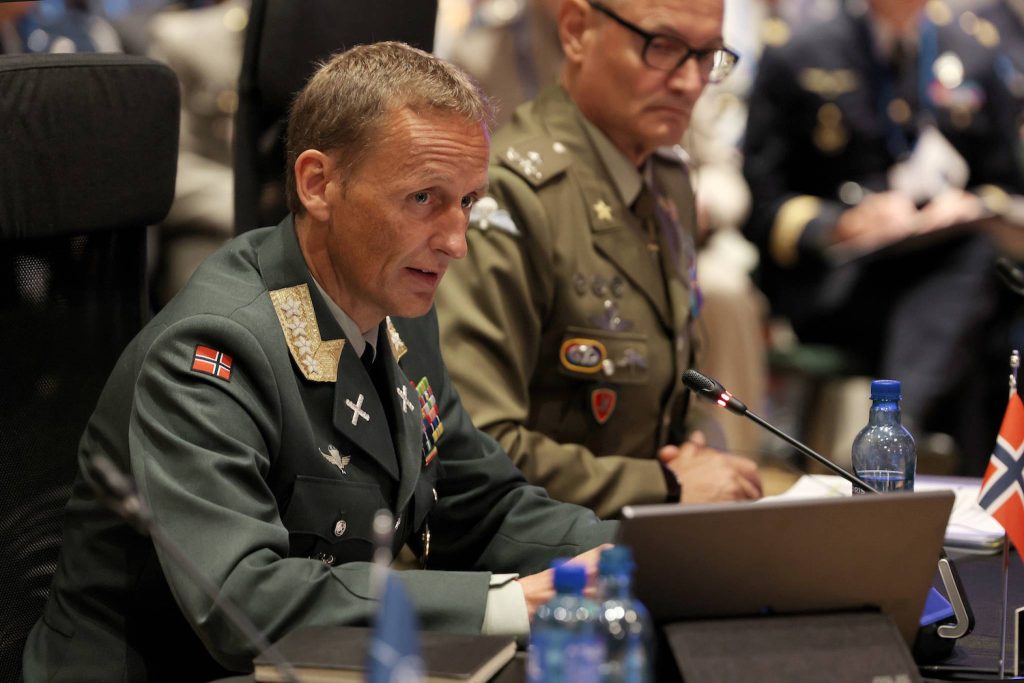
The Norwegian Defence Commission demanded an overhaul of the entire national defense but most importantly the navy, including efforts to strengthen skills, introduce better technology, and build renewed collaboration with the defense industries. For example, most military transports are commissioned to private companies, increasing logistical vulnerabilities, which must be decreased through a renewed civilian-military planning capability.37 The commission calls for an immediate increase of the Norwegian defense budget of €2.5 billion ($2.8 billion), and a yearly increase of €3.4 billion ($3.8 billion) for the next 10 years.
Norwegian defense procurements include the following:
- 54 German Leopard 2A7 main battle tanks — $1.89 billion38 ;
- AIM-120D missiles for the Royal Norwegian Air Force’s F-35s — $500 million39 ;
- Naval strike missiles jointly procured with Germany — $61.3 million40 ;
- Piorun Man-Portable Air Defense Systems (MANPADs) — $35.6 million41 ; and
- Cancellation of contract for 14 NH90 NATO Frigate Helicopters (due to manufacturer’s inability to find replacement components for the helicopters) — refund of $521 million.42
Denmark
Denmark downsized its defense sharply after the end of the Cold War. The country focused on modestly sized armed forces that could serve in NATO overseas operations including Afghanistan and Mali. Today, Denmark states that its national territorial defense will be particularly important as Russia’s navy and air force have increased their activity in Denmark’s vicinity and violated Denmark’s airspace and territorial waters.43 Denmark sees itself as having crucial roles in securing allied entry into the Baltic Sea through the Danish Straits and in providing host nation support to NATO forces. More broadly, Denmark’s military capabilities must be balanced between the Baltic Sea and the Arctic and North Atlantic, where it is responsible for defending the massive landmass and exclusive economic zone of Greenland, as well as the lightly populated but strategically situated Faroe Islands.
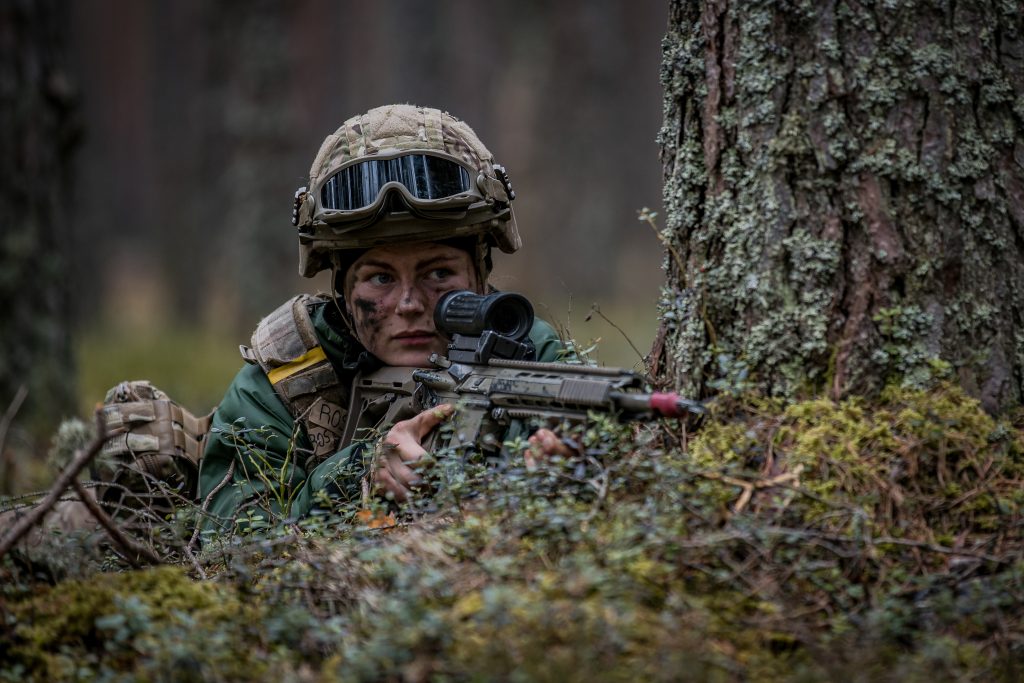
Denmark, like Norway, is facing a sharp change of course, stated in its recently published Foreign and Security Policy Strategy 2023.44 The new security strategy emphasizes the need to address challenges in an “uncertain, unpredictable, and complicated” world.45 Denmark singles out the United States as its most important ally, while fearing that the US is turning its attention elsewhere, and includes calls for the following:
- Strong engagement in NATO, contributing to a stronger deterrence, preparedness, and forward defense of the alliance and, through a renewed engagement with the EU, ending its security and defense opt-out.
- Assistance for Finland’s and Sweden’s integration into NATO through stronger Nordic defense collaboration including planning and exercises to meet the requirements of forward defense in the Baltic Sea region.
- Increased investment in regional security — Denmark has a “strategic interest” in strengthening relations with the Baltic states and countering military and hybrid threats there, and a “special responsibility” for security in the Baltic Sea region.
This change of prioritization exhibits Denmark’s shifting focus from Greenland and the North Atlantic closer to home, which can be seen as a reaction to the Nord Stream gas pipeline explosions just off the coast of Bornholm in September 2022, as well as Russia’s war in Ukraine.46 Like Norway, Denmark acknowledges Russia as a serious threat to stability in the Arctic, as Russian forces there remain intact, despite the war in Ukraine. Denmark gives dedicated support to Ukraine and foresees itself in a key role in rebuilding the country after the war. It also acknowledges the EU’s eastern flank as vulnerable to Russian and Chinese hybrid threats and wants to support countries in the Western Balkans, Romania, and Georgia in strengthening societal resilience.
Danish defense procurements include the following:
- Naval warships from Danske Patruljeskibe K/S47 — $5.5 billion48 ;
- 27 F-35 fighter jets to replace F-16s49 — $3.1 billion50 ;
- Upgrade of the Joint Arctic Command Denmark’s command-and-control capabilities as part of Denmark’s Arctic Capability Package51 — $244 million52 ; and
- Skyranger 30 air defense turret53 — $134 million.
Poland
Poland sees Russia as its main national security threat and has played a critical role in supporting Ukraine.54 It seeks to deepen its relations with the US, including hosting a US Army corps-level headquarters; to strengthen its defense contributions within NATO; and to advocate for permanent allied presence in the region instead of the current rotational construct. Its defense planning focuses on securing its border with Belarus and the Suwałki-Alytus corridor with Lithuania. Belarus is of particular concern for Poland, exemplified by a wave of weaponized migration on the border with Belarus in the fall of 2021.55 This hybrid action, which Poland met by deploying 12,000 troops, can now be seen as a prelude to the Russian attack on Ukraine in February 2022. Further such actions, below the threshold of conventional conflict, by Russia and its proxies risk destabilizing Europe’s eastern flank. Poland is also concerned by Russia’s stationing of short-range nuclear weapons and Wagner Group mercenaries in Belarus, the increasingly close military ties between Minsk and Moscow, and the possibility of Belarus’s complete annexation into the Russian Federation.56
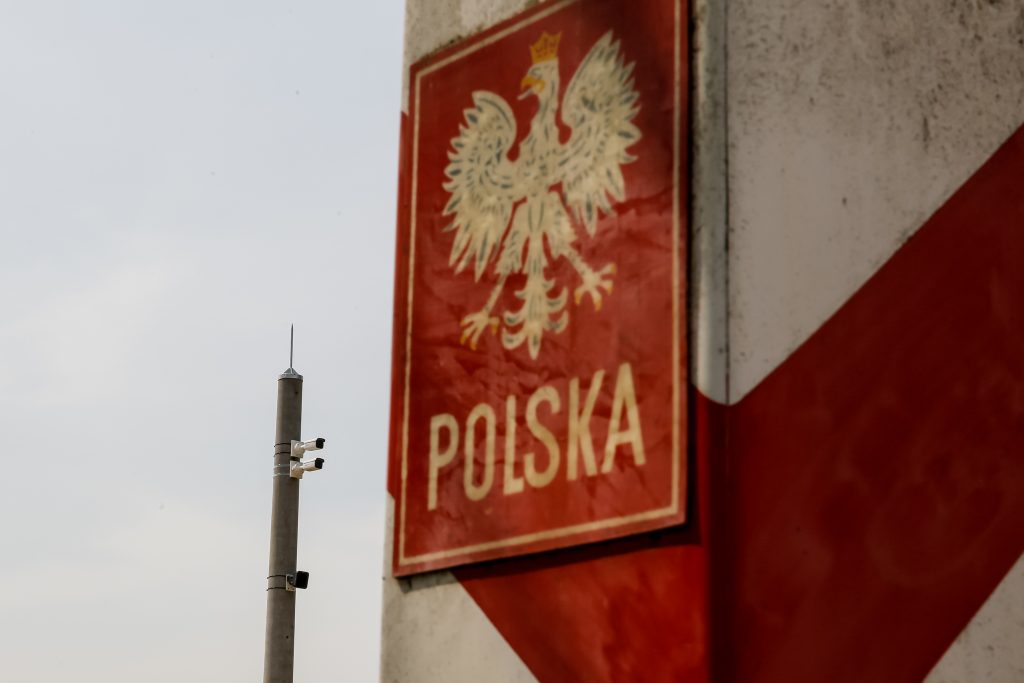
Since Poland’s accession to NATO in 1999, it has invested in defense procurement and modernization of its defense capabilities in all military domains, with objectives rooted in developing significant military power in Europe and buttressing the alliance against the threat of Russia. Military spending increased significantly in 2022. Poland has passed legislation requiring the government to spend at least 3% of GDP on defense every year. In practice, Poland is due to spend around 4% of GDP on defense in 2023 and 2024 as a result of a rapid and highly ambitious equipment procurement program.57
Polish defense procurements include the following:
- 1,000 K2 tanks, 672 K9 self-propelled howitzers, and 48 FA-50 light combat aircraft (based on the US F-16) — $14.5 billion58 ;
- 96 Apache helicopters59 — estimated $12.5 billion60 ;
- 500 High Mobility Artillery Rocket Systems (HIMARS) and ammunition — $10 billion61 ;
- 288 K239 Chunmoo rocket artillery launchers and ammunition62 — $6 billion63 ;
- 189 K2 tanks and 212 K9 self-propelled howitzers—$5.8 billion64 ;
- 250 Abrams tanks — $4.75 billion65 ;
- 23 F-35 fighter jets — $4.6 billion66 ;
- Two Patriot missile systems — $4.6 billion67 ; and
- Three Babock Frigates68 — $2 billion.69
Poland has yet to outline a national security strategy for the new era in European security (post-February 2022) or publish a national threat assessment. The most recent National Security Strategy, published in May 2020, confirmed assessments that Russian neo-imperialist policies are the most severe threat to Poland’s security, highlighting Russia’s offensive military potential, hybrid and “gray zone” operations.70 The earlier Defence Concept of the Republic of Poland, published in May 2017, presciently depicted Russia’s aggressive policy as a direct threat to the security of Poland and other countries of NATO’s eastern flank.71
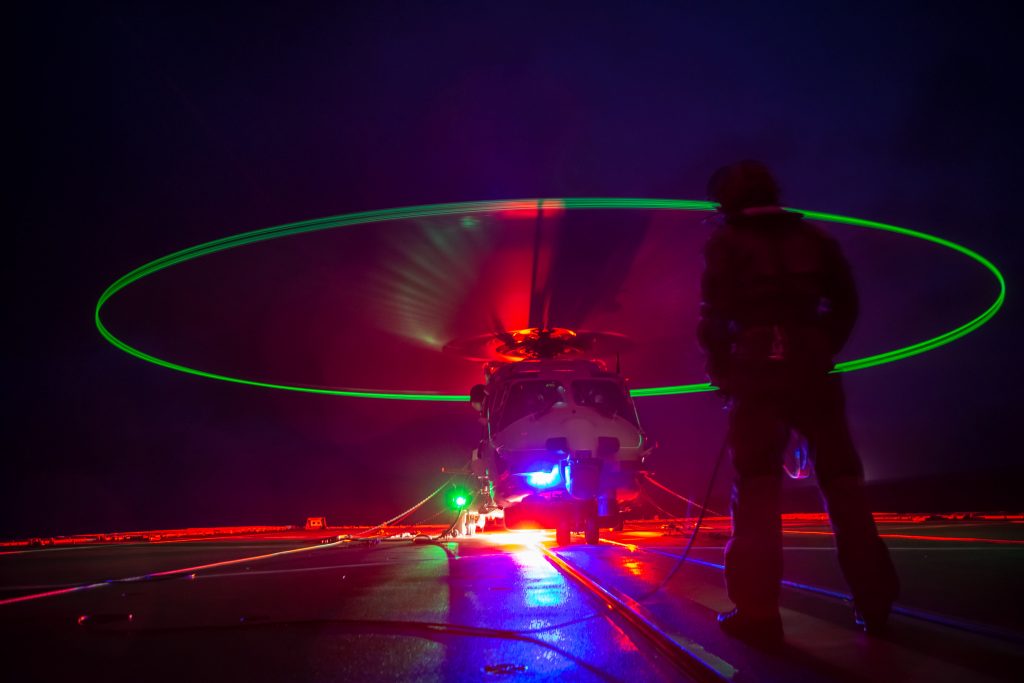
Germany
Germany’s policy toward Russia remained murky and controversial until February 2022. The war in Ukraine punctured both economic and political assumptions about the advisability of deep interdependence between Germany and Russia.72 Ironically, in the country where the term Realpolitik was coined, the war exposed the price of decades of disregard for geopolitics.73
The war prompted a new era in defense thinking, the Zeitenwende, including a commitment to invest an additional €100 billion ($112 billion) over the next few years to strengthen defense capabilities.74 The funds are meant to allow Germany to meet the NATO target of spending 2% of its GDP on defense each year.75 However, the German government announced in July 2023 that it will lower Germany’s defense spending from €445.7 billion ($485.7 billion) to €476.3 billion ($519 billion), or a cut of nearly 7% this year.76 German defense spending in 2024 is set to increase by much less than what the defense minister initially sought. 76
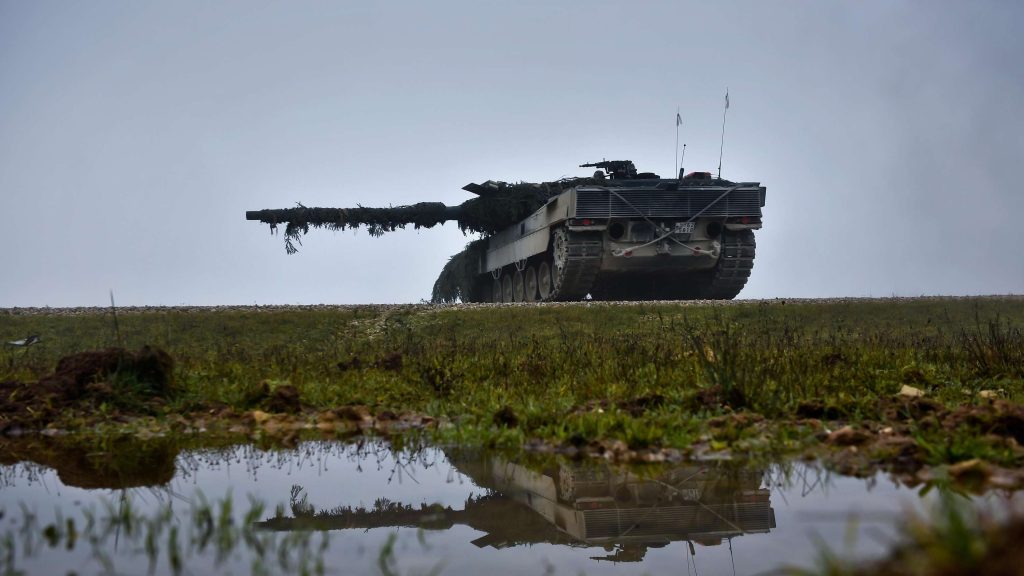
In a visible overhaul of its defense posture, in December 2021, Germany initiated the drafting of the country’s first National Security Strategy. Delayed by political disagreements on key points, particularly on China, this was belatedly delivered in June 2023.77 It names Russia as the greatest threat to peace in the Euro-Atlantic area and China as a “partner, competitor and systemic rival.”78 Germany wants to address threats through a concept of “integrated security,” attempting to bring together all levels of government and actors in society. Germany foresees its defense forces as the future bedrock of security in Europe. Budgetary priorities notwithstanding, in June 2023, Germany announced its intention to permanently base up to a brigade (~4,000 troops) in Lithuania, exhibiting its change in posture and security priorities.79
German defense procurements include the following:
- 35 F-35 fighter jets to host US nuclear weapons — $8.83 billion80 ;
- 60 CH-47F Chinook heavy-lift helicopters81 — $8.5 billion;
- Israeli Arrow-3 missile defense systems — $4.3 billion82 ;
- 50 Puma Infantry Fighting Vehicles (IFVs) — $1.65 billion83 ;
- P-8A Poseidon maritime patrol aircraft84 — $1.1 billion85 ; and
- 18 Leopard 2 tanks and 12 Panzerhaubitze 2000 self-propelled howitzers to replace those sent to Ukraine — $578 million.86
The Baltic States
The Baltic States of Estonia, Latvia, and Lithuania reestablished their armed forces after regaining independence from the Soviet Union in 1991.87 Starting from scratch after decades of Soviet occupation, the three countries developed independent territorial and expeditionary capabilities prior to joining NATO in 2004. Despite some similarities, the differences are striking. For example, Estonia built large reserve-based forces and has maintained conscription since 1991, while Latvia and Lithuania have all-volunteer forces and only recently reintroduced conscription. The Baltic states increased efforts to modernize defense capabilities after the invasion of Crimea in 2014 and made significant increases in defense spending after the Russian attack on Ukraine in 2022.
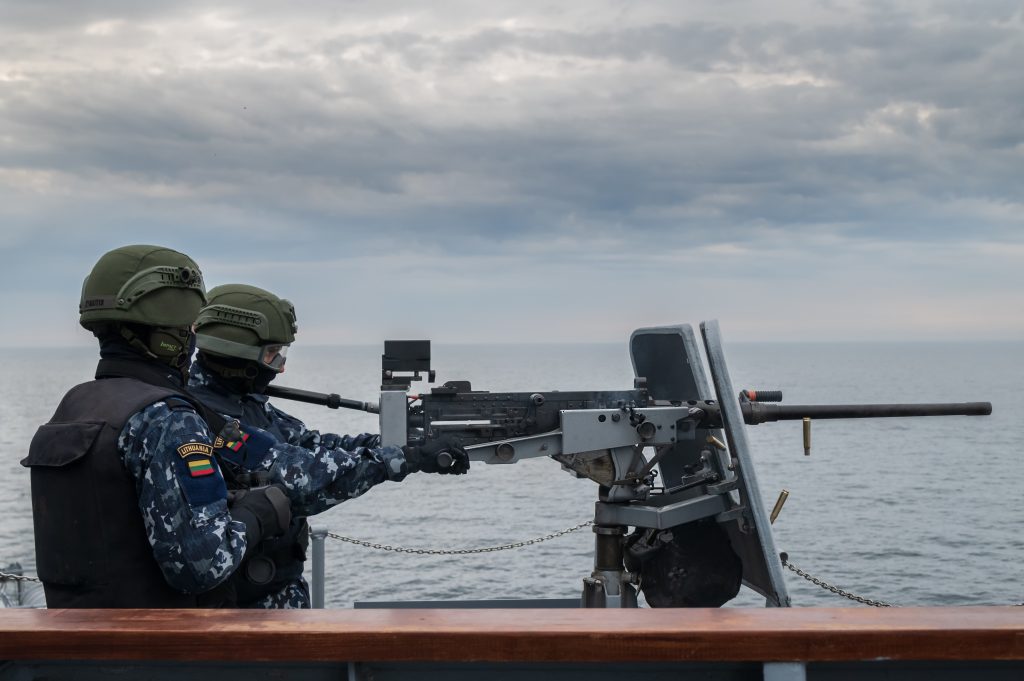
Joint defense procurement efforts of the Baltic states are crucial. In 2022, Estonia and Lithuania signed agreements of acquisition on a HIMARS with the US.88 Latvia is expected to sign a similar agreement with the US sometime in 2023.89 Other Lithuanian procurements include medium-range and short-range air defense systems, tactical electronic warfare systems, and micro-Unmanned Aerial Systems.90 Estonia and Latvia began procurement negotiations with Germany in May 2023, seeking to acquire the InfraRed Imaging System Tail (Iris-T SLM) air defense system.91
Despite their best efforts, the Baltic states will not be able to fully provide for their own defense in the case of a conflict, especially in the air and maritime domains. NATO’s support is therefore crucial. While seeking support from allies, the Baltic states stress are actively pursuing improvements.
Estonia
- In its updated 2023 National Security Concept, Estonia features whole-of-society and whole-of-government efforts.92 The threat from Russia is prompting significant increases in defense spending, from 2.85% of GDP in 2023 to 3.26% in 2024.93 Additionally, Estonia looks to strengthen its maritime defense and double its territorial defense units from 10,000 to 20,000 troops. The Estonian Internal Security Service reports annually on Russian and other internal threats, highlighting hostile intelligence activity as well as subversion, extremism, and terrorism and has done so since the 1990s.94
Latvia
- Latvia’s national defense strategy has four key priorities: national armed forces; comprehensive defense; NATO collective defense; and other international cooperation.95 Emphasis is given to NATO’s enhanced Forward Presence (eFP) battlegroup in Latvia. Latvia has decided to increase defense spending to 3% of GDP by 2027 and to invest in new technologies to respond to electronic warfare.
Lithuania
- In its annual report, the internal security service, the Constitution Protection Bureau (known by its Latvian initials, SAB), argued that Russia would continue to wage information wars in Latvia and neighboring countries in an attempt to exert control.96
Lithuania’s national threat assessment for 2022 highlights Russia’s military potential combined with aggressive Kremlin policies as the primary external security threat, along with the weakness of the Aliaksandr Lukashenka regime in Belarus. It also points to hybrid threats, principally from China, as part of the Beijing party-state’s aggressive foreign, economic, and information operations.97 Lithuania’s 2023 National Threat Assessment discusses similar issues including Russia’s war in Ukraine, Russia’s aim to strengthen its armed forces, Belarus’s participation in the war against Ukraine, Sino-Russian relations, and economic sanctions imposed on Russia by the West.98 Lithuania remains committed to providing for its own defense and to substantively contributing to any allied military action in the region. The country is increasing its defense spending from 2.5% of GDP in 2022 to 3.0% by 2030. It is prioritizing investment in strengthening its land forces, including through universal conscription, though these efforts are currently hampered by the negative demographic trend prompted by “emigration and poor health among recruits.”99
Estonian defense procurements include the following:
- Iris-T SLM air defense system procured jointly with Latvia100 — $655 million101 ;
- Mistral short-range air defense missile systems jointly procured by Belgium, Cyprus, France, and Hungary102 — $546 million103 ;
- Six HIMARS, ammunition and training — $200 million104 ;
- Blue Spear land-to-sea missile systems — $110 million105 ;
- 18 Spike anti-tank missile launchers and ammunition106 — $45 million107 ; and
- Joint procurement with Poland of PIORUN MANPADs108 .
Latvian defense procurements include the following:
- IRIS-T air defense systems procured jointly with Estonia109 — $655 million;
- 200+ CAVS APCs — $237 million110 ;
- Naval Strike Missiles anti-ship weapons111 — $110 million;
- Carl-Gustaf M4 anti-tank weapons with ammunition procured jointly with Estonia — $18 million112 ; and
- Joint procurement with Poland of PIORUN MANPADs113 .
Lithuanian defense procurements include the following:
- Eight HIMARS rocket launchers and ATACMS missiles — $495 million88 ;
- Four UH-60M Black Hawk helicopters114 — $213 million115 ;
- Switchblade 600 loitering munitions — $48 million116 ;
- Javelin anti-tank weapons systems — $48 million117 ;
- Carl-Gustaf M4 anti-tank weapons with ammunition — $14 million118 ;
- 120+ German-made Vilkas IF119 — contract not yet signed120 ; and
- 300 Joint Light Tactical Vehicles (JLTVs)121 .
The countries of the Nordic-Baltic region unequivocally assess Russia as the greatest threat to peace, and are focusing on addressing broad, society-wide threats as well as military ones. These are seen as existential and complex, posing great challenges to small states both in size and population, prompting a significant rise in defense spending across the region. A clear inference from the published threat assessments is that a comprehensive approach involving both military and civilian measures constitutes the most effective response. Pooling assets and expertise will allow these countries to make the best use of their assets in national defense and partnership within NATO.
Chapter 3: Military Resilience
The military threat from Russia to the Baltic states casts a much wider shadow. Allies near and far must help with better plans and more weapons.
The basis of military resilience is the ability to sustain a fight, plus the strength, ability, and capabilities to present risks and dilemmas to an adversary. If successful, military resilience will deter a potential adversary. As noted in the previous chapter, the emphasis on military resilience was largely out of fashion for most of the three decades following the end of the Cold War. There are nations in the Nordic-Baltic region that prioritized military resilience (notably Finland and Estonia), but for the most part the new security environment requires rapid, comprehensive changes: military modernization to include precision strikes, further investment in integrated air and missile defense (IAMD), intelligence indications and warnings capabilities, and integration/interoperability among allies. As outlined in the previous chapter, much remains to be done, particularly for those countries that let their capabilities atrophy.
In the Kremlin’s current neo-imperialist discourse, the Baltic states are seen not as sovereign countries but as temporarily lost provinces of Russia’s historic empire, under the rule of Western puppet regimes.122 Russia’s invasion of Ukraine is depicted as a continuation of the wartime fight against the Nazis. Similar, if misleading, historical parallels could be drawn in the Baltic states.
Regional geography adds temptation to this pseudo-historical claim. Russia can move forces close to Baltic state borders on a routine basis, either under the pretext of peacetime exercises or as a show of force increasing the danger of a fait accompli attack. With little to no warning, assaults seeking to decapitate the defending nation’s leadership, create confusion, block mobilization and reinforcement, and pave the way for a quick and decisive victory meeting the attacker’s political and strategic goals are all scenarios in need of examination and preparation.
Such a move would strike at the heart of Western and allied decision-making. The seizure of a token piece of territory, such as an island in the Gulf of Finland, or an unpopulated area just across the border from Russia, could raise questions in some Western capitals about whether a full-scale military response was justified. Some allies would insist on going to war to defend the principle of territorial integrity. Others might urge a negotiated solution. Conversely, a successful attack, involving decapitation of leadership, destruction of key military assets, and/or seizure of a larger strategically important territory — for example, cutting the Suwałki-Alytus corridor that links Poland to Lithuania — would raise questions about whether regaining sovereign territory was feasible.
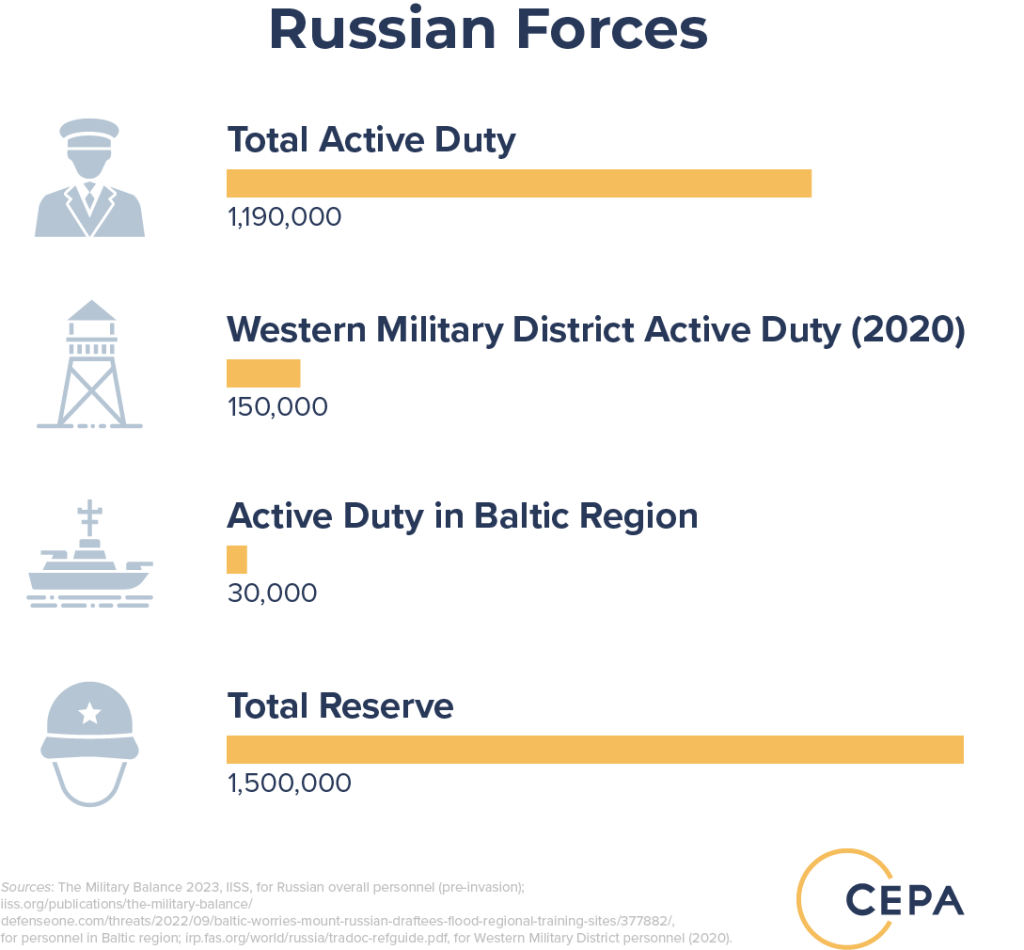
Without a decisive military response, such a Russian move would create a bargaining chip with the West, to the grave detriment of the sovereignty and security of the three Baltic states in particular and of the wider region, and with catastrophic results for NATO and US credibility.
Historical and geographical issues in the Baltic states potentially outweigh Russia’s general long-term weakness vis-à-vis the West. Russia sees the Baltics as both tactically vulnerable and strategically valuable: NATO credibility is at stake, while specific local factors hamper defense. Given the pattern of opportunistic, even reckless decision-making in the Kremlin, this is an ominously tempting combination. In implementing such an attack and in forestalling it, time is of the essence, as is the mix and composition of the defending forces. These must create and inject uncertainty into the minds of Russian decision-makers planning a fait accompli attack.
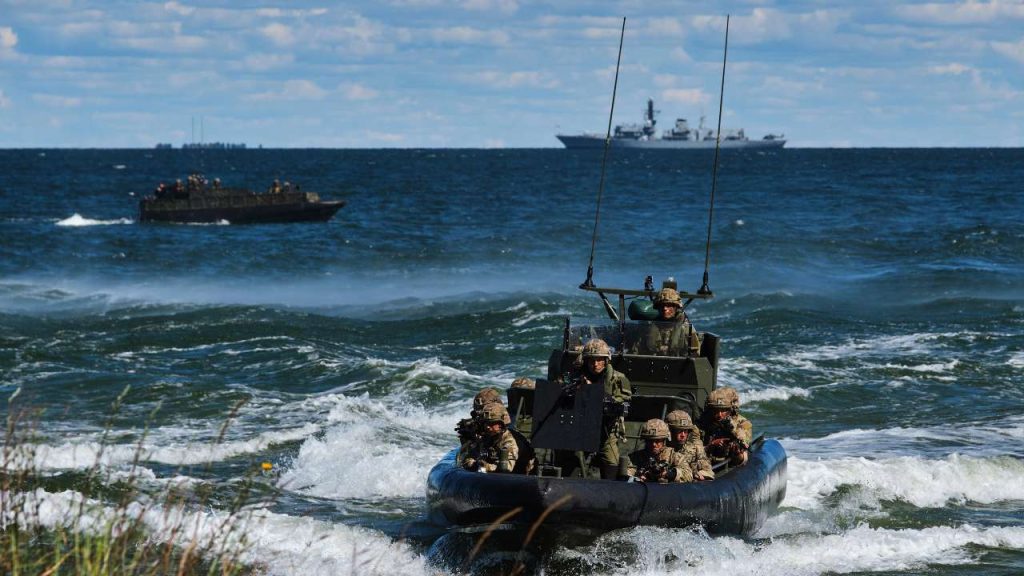
Most important is sustaining, or if needed, strengthening the will to fight. Ukrainians continue to show how a strong-willed, dedicated force can overcome operational and material disadvantages. Given their geography and history, the Baltic states have conserved the will to fight at the center of their national defense planning.123 This creates the basis for rapid mobilization, which can derail a Russian fait accompli assault before it reaches its operational goals. It thus also creates the vital element of uncertainty.
The Baltics’ will to fight will be boosted by the confident expectation of allied support. That requires substantial defense planning (mostly by its nature classified) and a visible presence that reassures the wider public.
Recommendations
Ensure Full Implementation of Deterrence and Defense of Euro-Atlantic Area
This includes full implementation of NATO’s executable regional plans, domain plans, and the area of responsibility–wide plan to include a full assessment of gaps, and a strategy to fill those gaps. This strategy must encompass all domains including how to strengthen air, land, sea, space, and cyber. And the alliance must examine how to assign or allocate forces to the plans and turn the strategy into fully executable deterrence and defense.
To effectively deter adversaries in an increasingly urban war environment, strengthening the defensive architecture across all elements of national power is key, touching across the spectrum of capabilities and capacity. This also requires crafting recommendations very similar to an “if/then” equation, such as premade decisions in the alliance’s collective defense architecture. For example, if “A” happens, then the Supreme Allied Commander Europe can do “B”; if we see “A” on our indications and warnings program, then “C” happens at the EU and in other elements of national power in member states. This type of approach allows the alliance to operate and deter at speed to deter and defend.
A further lesson from the Russian invasion of Ukraine concerns uncertainty. By all accounts, Russia expected a quick victory in Ukraine, highlighting leaders’ wishful thinking and biased data collection. In the Baltic context, Russian overconfidence could also play a fatal role. It is therefore important to design support for Baltic national defenses to maximize Russian doubts about success, for example, a calculated balance of both defensive and offensive capabilities that the alliance exercises and communicates to Russia in clear terms.
NATO support for the Baltic states against a Russian surprise attack should include further dedicated resources and commitment of permanent assets. For example, the provision in January 2022 of 2,000 NLAWs gave the Ukrainian defenders the ability, in conjunction with their own capabilities, to slow down the Russian assault and inflict serious losses on Russia early in the campaign. This created a time window for outside support for the Ukrainians to mobilize their territorial forces, and for Ukrainian society to move to a war footing. Robust prepositioning in Ukraine was hampered by the fact that the country is not a member of NATO. No such difficulty applies to the Baltic states.
The more NATO allies plan and preposition equipment in or near the Baltic states, the more likely a successful defense. Stockpiles of certain equipment and weapons such as modern anti-tank weapons and mines can be decentralized to avoid early destruction by the aggressor.
A further element in boosting defense and deterrence is ensuring that Russian capabilities in Kaliningrad and other western regions cannot be used to isolate the Baltics in a crisis. Russian air defenses pose a serious challenge to the region as their range has radically increased from 40 km to 200 km and beyond in the last decades. This Russian capability can intercept any airlifted effort from NATO into the Baltics, for example.
For their part, NATO’s air defenses have an increased range that can contest any attempt for Russian air superiority in the region and are faster in responding to a crisis, with base capabilities in the region and air-borne refueling. However, establishing air superiority typically involves neutralizing the adversary’s assets, which in the Baltic region would involve strikes into Russian territory, something that some allies might regard as escalatory. From the NATO perspective, it is worth noting that IAMD assets — including shooters, sensors, and command posts — need not all be based in the Baltic states to protect these countries.
Similar difficulties surround naval strategy. In the event of a crisis, the Russian Baltic Fleet could attempt to impede any sealift to support the Baltic states. Preventing it from doing so would involve strikes against bases in Kaliningrad and St. Petersburg.
These challenges mean that regional defense plans are critical, linking national capabilities to build a layered structure. The new regional defense plans must identify and assess the gaps and align or allocate forces to fill those gaps. For example, a joint Finnish-Estonian-Swedish coastal defense constellation with helicopter-based anti-ship and anti-submarine capabilities, shore-based missile batteries, and surveillance would effectively deny Russian access to the Baltic Sea from the Gulf of Finland. A similar constellation could be created for the Kaliningrad area focused on the strategic significance of Gotland Island (see Gotland box). Furthermore, the demilitarized status of the Åland Islands needs examination. Placing military forces and infrastructure on this sovereign Finnish territory is precluded under international treaties. However, protecting the islands against seizure by Russia is important for the security of sea lanes between Sweden and Finland.

NATO allies must make clear that they will contribute to:
- deterring a Russian invasion by creating daunting levels of uncertainty in Russia’s strategic calculus;
- predicting a Russian invasion through improved intelligence, surveillance, and reconnaissance, including high-end capabilities that would be beyond the reach of the Baltic states’ defense resources;
- forestalling a Russian invasion through better air and missile defense, and speedy and effective reinforcement, drawing on effective military mobility and pre-positioned stockpiles (see below); and
- repelling a Russian invasion from the start, not arriving later in the hope of liberating occupied territory.
The defense of the Baltic states requires confidence in a rapid response to Russian aggression that slows and denies initial success and ensures that Russia cannot isolate the operational area and hinder NATO support. This includes the following:
- Prepositioning of anti-tank and short-range air defense capabilities, with cost-sharing from other NATO allies. To make this politically more palatable in donor countries, and to create a rung on the escalation ladder, this may include the provision that ownership is transferred only when war is imminent.
- Establishing a joint (brigade-size) Finnish-Estonian-Swedish coastal defense constellation with helicopter-based anti-ship and anti-submarine capabilities, shore-based missile batteries, and surveillance to close the Gulf of Finland and Gulf of Bothnia.
- Supporting Baltic defense by long-range fires from batteries in southern Finland, Gotland, and northern Poland. For example, the Precision Strike Missile (PrSM) has an approximate 500-mile range and similar products are under development. The limited operational space in the Baltics and the risk of direct strikes on long-range fire batteries based there would support positioning them outside the operational area. The need for this will grow along with the increased range of long-range fires.
Gotland
The addition of Sweden and Finland to integrated regional security as part of the NATO alliance adds to the mix, not only in the form of capacity but through improved operational space, staging areas, logistic support, and base areas for air superiority and long-range fires. In particular, the Swedish island of Gotland assumes importance:
- as a logistic hub, for both air and sea transportation;
- as a blocking air and missile base against a Russian naval strike force seeking to reach the Baltic Sea approaches;
- for air defense and air superiority operations; and
- for intelligence collection.
Rebuilding Gotland’s defenses, dismantled in the 1990s, is a substantial task. In the 1980s, these included a mechanized brigade, together with numerous independent battalions and a brigade-sized coastal defense formation with well-protected gun and missile batteries, plus modern radar and surveillance systems.
Not only were these units deactivated, but Swedish readiness declined sharply, making it slow and difficult to respond to heightened risk by moving units and assets from mainland Sweden and other NATO countries.
The current Swedish Air Force detachment at Visby Airport (unit F17G) can support a small number of airframes and has limited ground forces to safeguard the perimeter and base area. For the defense of the whole island, the Gotland Regiment (P18) was reactivated in 2018 and created, on paper, a mechanized battalion as the core of the island’s defense. Still, due to staffing shortages and delayed activation, the actual ground fighting readiness is a reduced battalion with one armored company and a mechanized infantry company. The additional forces are a Home Guard battalion with limited heavy weaponry, mobility, and sustaining combat ability.
Upgrading the military presence on Gotland, in particular its infrastructure, to support NATO defense of the Baltics will be an urgent task for Sweden. Visby Airport should be upgraded to a full-sized air force base, with auxiliary airfields on the island. NATO allies should further consider creating a permanent presence on the island with anti-submarine warfare, air superiority, and transportation capabilities.
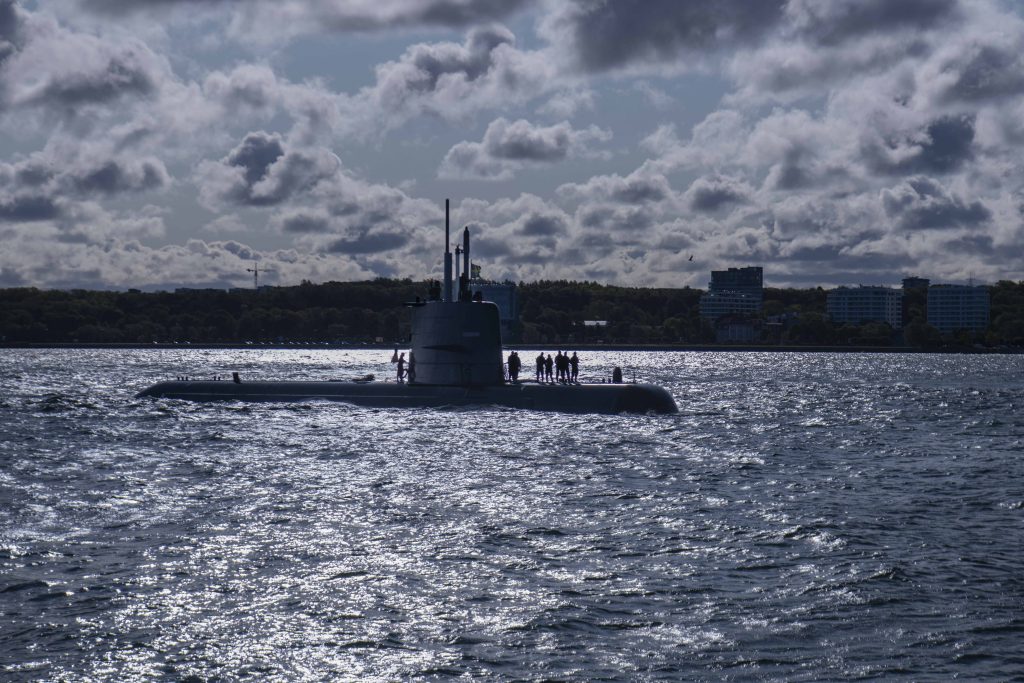
The size of Gotland, with a length of 170 km and a total area of 3,000 km2, allows the dispersion of units and assets to avoid hostile strikes. But it also requires a larger ground force: at least a brigade-sized land component to be able to defend and, if needed, retake a lost airfield, and protect the harbors. These units can be a mix of active units and locally recruited conscripts, who can be rapidly mobilized. NATO can add air, naval, logistics, and air defense assets to Gotland, but these assets need to have the island secured and defended as these units arrive.
Chapter 4: Non-military Resilience
Getting non-military resilience right makes war less likely.
Strong states and strong societies are daunting targets for aggressors. At summits in Warsaw in 2016 and at Brussels in 2021, NATO laid out the importance of boosting civil preparedness as part of military defense and deterrence.124 The Vilnius summit cited national and collective resilience as a deterrent and key to safeguarding transatlantic societies, populations, and NATO’s shared values.125 The same approach is necessary to resist and recover from natural disasters, infrastructure failures, and hybrid attacks.126 Physical and psychological resilience are therefore key to successful defense.
Physical elements of resilience include the following:
- Energy security: Access to diverse sources of power and fuel, abundant storage, and flexible demand
- Emergency stockpiles: Ability to source food, drinking water, healthcare resources, and spare parts
- Hardened infrastructure: Public transportation, power grids, natural gas networks, automotive fuel distribution, mobile and fixed-line telephone service, broadcasting, shelters for civilian population
Psychological elements include the following:
- Information security: An educated and resilient population that can distinguish between truth and falsehood, skeptical of hoaxes and scare stories
- Social cohesion: High levels of societal trust, willingness of a population to make sacrifices and accept inconvenience in pursuit of common goals
- Elite expertise: Well-trained, well-networked decision-makers used to working outside their professional silos and across the public-private, civil-military, and classified-unclassified divides
- Culture with institutionalized processes: Able to switch smoothly and speedily from “peacetime” to “emergency” contexts
- Threat awareness: Public and elite understanding of the nature and extent of current and future threats
All these elements are present in the region, though they vary among countries due to differing histories, threat perceptions, and wealth levels. The pioneer in the “total defense” concept was Sweden, resulting from neutrality during the two world wars of the 20th century. The concept consisted not only of conventional military and civil defense, but also psychological defense (under the supervision of a government agency) and economic defense. Lead companies, known as krigsviktiga företag, or “K-companies,” enjoyed special privileges and responsibilities to promote self-sufficiency in key areas.
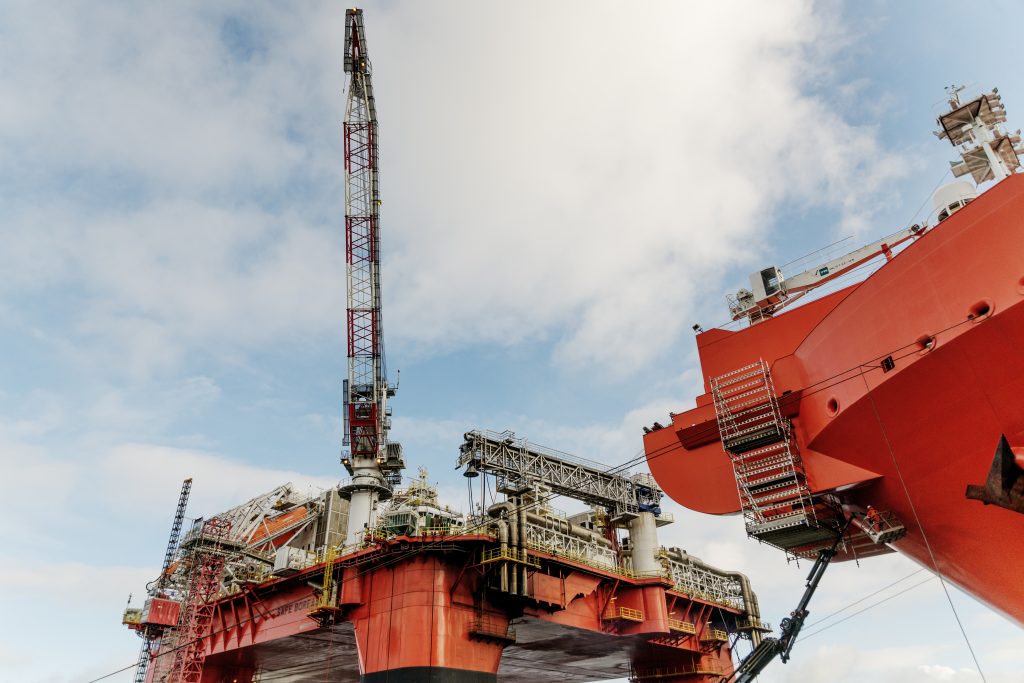
However, Sweden largely dismantled its total defense model in the 1990s. Denmark, which had a less developed approach to defense in the Cold War, did the same. Finland, by contrast, retained and developed its approach to national security, continuing to invest both in weapons systems and in the social and public institutions necessary for whole-of-society defense, referred to in Finnish as Kokonaisturvallisuuden, in English usually “comprehensive security.”127
One element in this is Finland’s National Emergency Supply Agency (Huoltovarmuuskeskus) financed by a 0.5% levy on all fuel and energy sales.128 An extensive network of shelters for the population can accommodate approximately 86% of its residents.129 A signal feature is national defense courses, in which decision-makers from a wide range of professional and social roles take part in intensive off-site training in national security and crisis management. These prestigious courses build participants’ skill levels, and networks and cohesion across society.130
Norway, as one of only two NATO states directly bordering the Soviet Union, emphasized resilience in the Cold War, but along with Sweden, substantially reduced it after 1991. Norway has since 2000 begun rebuilding its total defense.131 The three Baltic states, recovering from Soviet occupation after 1991, have adopted different approaches. Estonia has come closest to the Nordic model, beginning to follow the Finnish approach from 2008 onward.132 Baltic “comprehensive defense” models are in general less well developed, however, and focus mainly on reserve and related military forces such as Lithuania’s Riflemen’s Union and Estonia’s Defense League.
However, where the Baltic states stand out is in the public work of their intelligence and security agencies. Estonia’s security police (KAPO) has been publishing an annual counter-intelligence report and threat assessment since 1998.133 Regarded as highly unusual at the time, this example has now been followed elsewhere. The Baltic states have also gained considerable experience in cyber defense. The 22-day Russian cyberattack on Estonia starting in April 2007, although technologically crude, was an important benchmark, both in assessing hostile capability and in testing domestic resilience.134 Lithuania’s “Elves,” an irregular formation of cyber activists fighting pro-Kremlin propaganda, and other efforts, avowed and behind the scenes, have developed renowned competence in countering information operations.135
Despite national variations, the framework concept for the Baltic Sea region, and indeed for all of NATO, is the Nordic Resilience Model. Mainly focused in previous years on disaster preparedness and other civil contingencies, such as natural disasters, hostile-state activity, technological breakdowns, or social upheaval, it features a whole-of-government and whole-of-society approach. Nordic cooperation on civil preparedness took shape in 2009 at a meeting in Haga, Sweden.136 Responsibilities to build resilience, maintain preparedness, and ensure the continuity of vital societal functions are diversified and devolved, within a comprehensive, cooperative system of joint preparedness.137
All public agencies and government departments support each other in a crisis. Recent stress tests have included the COVID-19 pandemic.
Nordic resilience can be recalibrated from its original civilian mission to deal with a full spectrum of threats, regardless of their source, cause, or likelihood.
Resilience in action: A Finnish example
Airiston Helmi, was a small real estate company that bought properties in southwest Finland close to strategic infrastructure and military objects with seeming impunity. But on September 22, 2018, the biggest security operation in Finland’s post-war history cast light on its activities. 400 officials, including special forces, coastguards, military police, intelligence agencies, tax inspectors, and others found military-style communications equipment, millions of euros in cash, and decommissioned naval vessels (still, contrary to the rules, painted in their original camouflage), plus bunkers, underwater installations, and a helicopter pad.
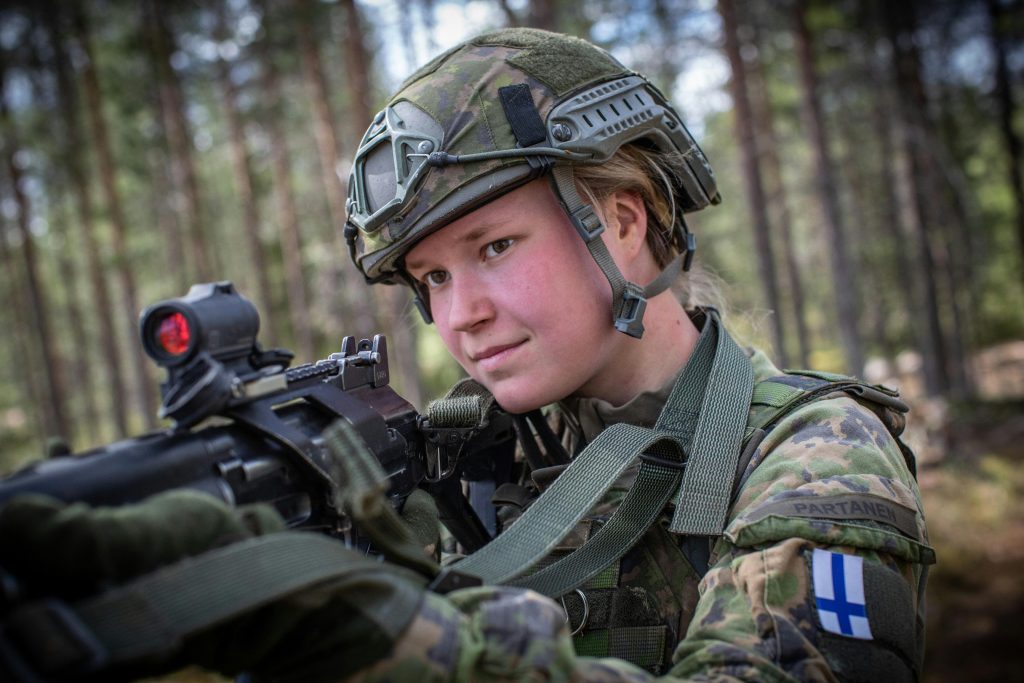
The owner was a Russia-born millionaire with a Maltese passport, Pavel Melnikov, who insists that he has no connection with the Russian state. A criminal trial of eight individuals as well as the firm itself, on charges including aggravated tax fraud, aggravated accounting crimes, and aggravated occupational pension insurance contribution fraud, is now scheduled to start on December 4, 2023.138
As well as an exercise in interagency cooperation, the episode sent important messages. The authorities were signaling that a line had been crossed and that the state was prepared to take firm measures in response. After five tight-lipped years, more details have emerged. The defense minister at the time, Jussi Niinistö, said in February that the operation “sent a strong signal in Russia’s direction. A well-connected military historian, Markku Salomaa, said that the company was indeed a front for Russian military intelligence, with the task of spying on nearby submarine cables, and the potential to sabotage these and other communications links in a crisis. 139
This episode, and its continuing fall-out, can be seen as an exemplary illustration of the weaknesses and strengths of the Finnish approach. The authorities probably waited too long before acting. However, when it came, the intervention was sudden, well-planned, and decisive. Silence thereafter leaves the adversary confused and vulnerable. Everything necessary was done, eventually. Nothing unnecessary was said.
Regional responses to a regional threat
As other parts of this report also argue, the Nordic-Baltic region faces common security challenges. Although decision-making in some respects is and must remain national, the responses to these threats increasingly need to be made on a multilateral basis. As a report by the Finnish Institute of International Affairs noted in 2022, “Whilst the Nordic countries have existing bi- and multilateral agreements in place, these do not provide a shared framework for region-wide cooperation.” 140
It proposes an umbrella framework agreement that would set out the “scope, shared objectives, principles, and modus operandi” of regional resilience cooperation. This would put regional resilience on par with narrower national priorities, set shared long-term strategic objectives, and provide a mechanism for changing priorities according to the threat environment. A Nordic Resilience Fund would provide financial support for these efforts over a five-year term.
This approach would be most valuable if pursued on a full regional basis (ideally the Nordics, Baltics, Poland, and, if possible, Germany) rather than just within the narrower framework of Nordic cooperation.
High among the practical issues to be addressed is infrastructure. Progress has been made in protecting the Suwałki-Alytus corridor, which links Poland with Lithuania (and the other two Baltic states). However much remains to be done. Railroad connections throughout the region are less dense than in the rest of Europe, and connectivity between the Scandinavian peninsula (Denmark, Sweden, and Norway) and Finland is poor. The Baltic states lack a direct rail connection to the rest of Europe, and links within the region, pending the completion of the high-speed Rail Baltica Tallinn-Warsaw line in 2030, four years behind schedule, are limited.141 Work on hardening port facilities and road, and rail bridges has barely started.
A particular risk, at least in outside perceptions, is of destabilization of areas with significant minorities with ethnic, cultural, or linguistic ties to Russia. These include Daugavpils in Latvia and Narva in Estonia. Government moves in Latvia to remove remaining physical and legal traces of the Soviet occupation are potential sources of controversy. Soviet-era migrants — around 20,000 — who took Russian citizenship after the end of the occupation in 1991 must now apply for residence permits, which for those aged 75 and under includes passing a basic test of language competence in Latvian.142 Russian is also being removed as a language of instruction in schools and Soviet-era war memorials are being demolished or removed. In more than three decades of restored independence, however, the Baltic states have proved broadly successful in dealing with their Soviet-era settler and migrant populations, with a combination of carrots (integration) and sticks (attentive counter-subversion work). There has been little overt sign of sympathy in any population segment for Russia’s war in Ukraine and little indication that private views are any different.
Deeds, words — and thoughts
It is also high time for those involved in national resilience to look beyond their national borders and consider a regional approach, not only in pragmatic but in conceptual terms.
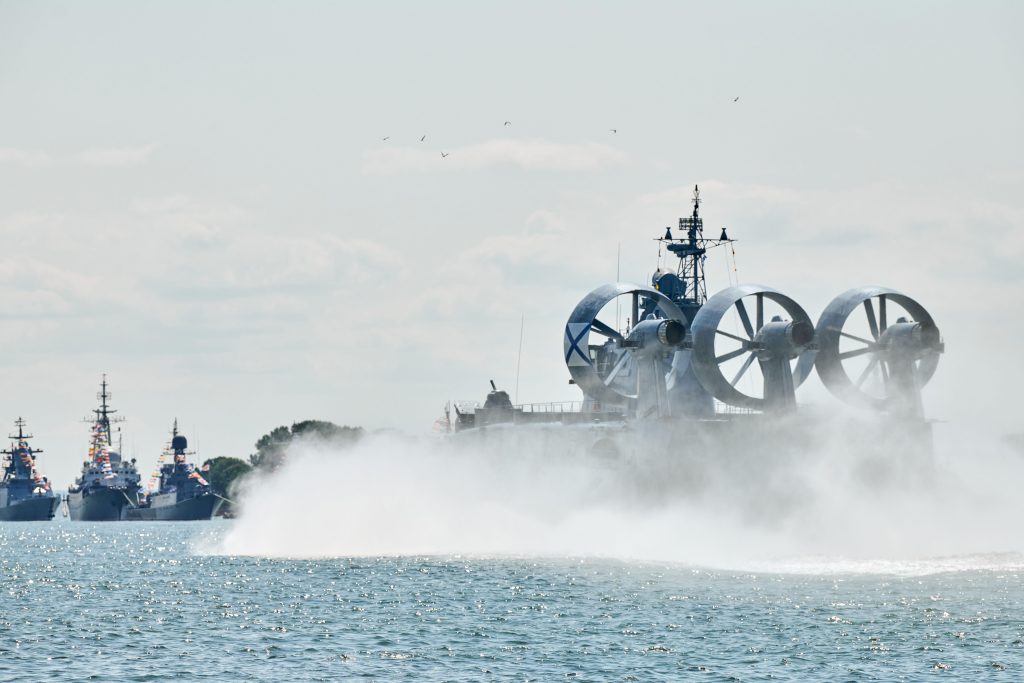
The first element of this should be an annual regional threat assessment. This assessment should come in classified and unclassified forms, with the unclassified being available to the public. It should highlight the sources of threats. Chief among these is Russia. China has targeted Sweden and Denmark with aggressive “wolf warrior” diplomacy and other pressure.143 It has imposed sanctions to punish Lithuania for political ties with Taiwan.144 Iran conducts operations against dissident émigrés in the region.145 The two NATO capitals in closest range of North Korea’s missiles are Helsinki and Tallinn. Forms of violent extremism, based on far-right ideology and on ethnic and religious fanaticism, are also problems in some countries.
These assessments should also highlight the cross-border nature of the threat. For example, a TV station based in Sweden can be mounting a disinformation campaign in Latvia. An embassy official in Warsaw can be menacing a diaspora in Stockholm. A company registered in Estonia can be conducting money laundering on behalf of a Kremlin crony in Finland. In the manner pioneered by Estonia’s KAPO, this report should name names and give specific examples.
Such an unclassified publication would have several important benefits:
- Raising awareness among national populations of the threats they face;
- Holding decision-makers to account — if a threat is highlighted, it would increase expectations that it will be dealt with;
- Reducing the likelihood of espionage, sabotage, bribery, and other subthreshold activities being covered up for reasons of political convenience or cowardice;
- Showing allies and partners that the region is taking its own security seriously;
- Signaling to Russia and other threat actors that their activities are at risk of public exposure;
- Providing a template for similar efforts in other regions.
The classified version would inform decision-makers across governments about the cross-border threats that may be missing from more nationally focused assessments.
Annual publication puts developments, positive and negative, in a historical context. If a threat is mentioned in one year, then readers will expect to see more news of its rise, decline, or evolution in subsequent years. This makes it less likely that threats will fall off the radar because of the pressure of time, events, or political convenience.
A second annual report should deal with civilian resilience, ranging from infrastructure and information security to counterintelligence and counterterrorism. It should come in classified and unclassified form. Important elements would include the following:
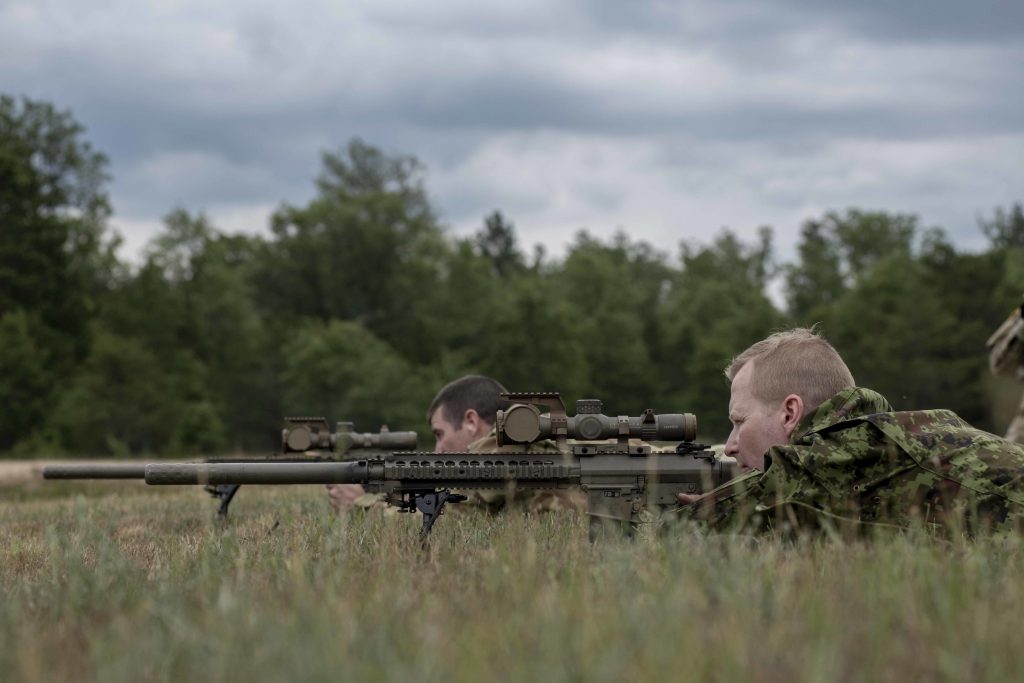
Benchmarking
No country’s solution is perfect. Every partner and ally in the region has at least something to offer. A clear-eyed, objective assessment of strengths and weaknesses across the region would be of great help in highlighting areas that need improvement, and in tracking progress year-on-year. Potential categories for benchmarking might include the following:
- Investment in stockpiles and physical resilience (with some details confined to classified annexes);
- Training programs, both for specialists and generalists;
- Local, regional, and national exercises;
- Public messaging campaigns;
- Assessments of public awareness by demographic, socioeconomic, and other categories.
Exchange of expertise
- Embassies should include a “resilience liaison” officer at the first-secretary level or equivalent tasked with building institutional and personal ties with host-country decision-makers.
- Regional and subregional exercises against the full range of hazards and threats, with cross-posting of specialists among locations.
- Training courses with multinational participation — Finland’s core competence in this could have regional significance.
Cross-border redundancy
- Countries should identify and create capabilities that meet their own needs and/or those of their neighbors.
- Operators of infrastructure links (road, rail, oil and gas pipelines, power networks, telecoms) should be tasked with maintaining not only national but cross-border resilience.
The combination of a formal regional framework, specific budget-line support for resilience from national governments, and published assessments of threats and countermeasures will entrench resilience at the heart of the Nordic-Baltic region’s defense. It will encourage outside allies to plan their own contributions to regional defense with confidence and also serve as a template for other regions and subregions in NATO (and beyond) that need to boost their defense against subthreshold attacks.
Chapter 5: Recommendations and Conclusion
The sea change in Baltic Sea regional security outlined in this report is welcome. But much remains to be done to achieve its potential, inside and outside government.
For the coming decade or more, the countries of the region face a sharp challenge from the east. Whatever the outcome of Russia’s war in Ukraine, the Russian Federation (and any political entity or entities that succeed it) will be a difficult, likely dangerous, neighbor. It is probable that Russia will reconstitute its military faster (in anywhere from two to ten years)146 than NATO can restore its defense and deterrence.147 For the countries around the Baltic Sea, collective regional security will be a vital component of their defenses.

The first recommendation of this report is therefore to accept the political and economic cost of integrated security at a regional and national level. Throughout its history, this region has been fragmented, with the legacies of empire, neutrality, and belligerence in two world wars and the Soviet-era division of Europe all playing a role. The region remains diverse, with countries varying sharply in income levels, in size of population and territory, in external orientation, and in military tradition and culture. Overcoming these differences, remedying weaknesses, and capitalizing on strengths will be a huge task for decision-makers and opinion-formers across governments and society. The Nordic countries have pioneered defense cooperation, but could do more. The Baltic states have done less on a local level and must do more in the future. Poland and Germany have barely begun thinking about Baltic Sea regional cooperation. The to-do list is long, and the costs are many and varied.
They include the financial cost of defense spending and national resilience. NATO’s target of spending 2% of GDP on defense should be a floor, not a ceiling. Politically popular defense-related projects (i.e., domestic procurement, trophy capability projects, or infrastructure) must not divert money from essential military priorities: effectiveness, readiness, interoperability, and sustainability. No country should expect to provide a full spectrum of military capabilities. Each will need to rely on its allies.
This highlights the next point: National sovereignty in regional defense terms is a paradox. Preserving it from foreign attack means pooling it with allies. Most countries of the region have experience in this, through long-standing membership in NATO, the EU, or both. But regional defense cooperation will require unprecedentedly close cooperation. The adversary will not respect national borders. Neither can defense planning. All countries in the region will have to accept that their military forces will come under foreign command in wartime. This means rehearsing that in peacetime. The nascent Nordic (Danish, Finnish, Norwegian, Swedish) air force integration agreed to in March 2023 sets down a useful marker here.148
We also recommend that the broadest shoulders bear the biggest burdens. In particular, the Baltic states cannot and will not be able to afford the advanced weapons systems necessary for their own and regional security. This principle is exemplified by Baltic Air Policing, in which NATO allies with military aviation capabilities have, since 2004, patrolled the airspaces of Estonia, Latvia, and Lithuania. This mission is now evolving into Baltic Air Defense, but much more investment is needed. Allied efforts should include layered air and missile defense; advanced intelligence, surveillance, and reconnaissance; and anti-ship missile systems. It makes no sense for countries such as Sweden, Denmark, or Germany to deploy these costly weapons systems solely on their own territories. The outer security perimeter of the Nordic-Baltic region is the frontier with Russia; all countries in the region have an interest in defending it as determinedly as they would their own borders. Basing elements of these systems (sensors and shooters, for example) in different countries strengthens regional cohesion.
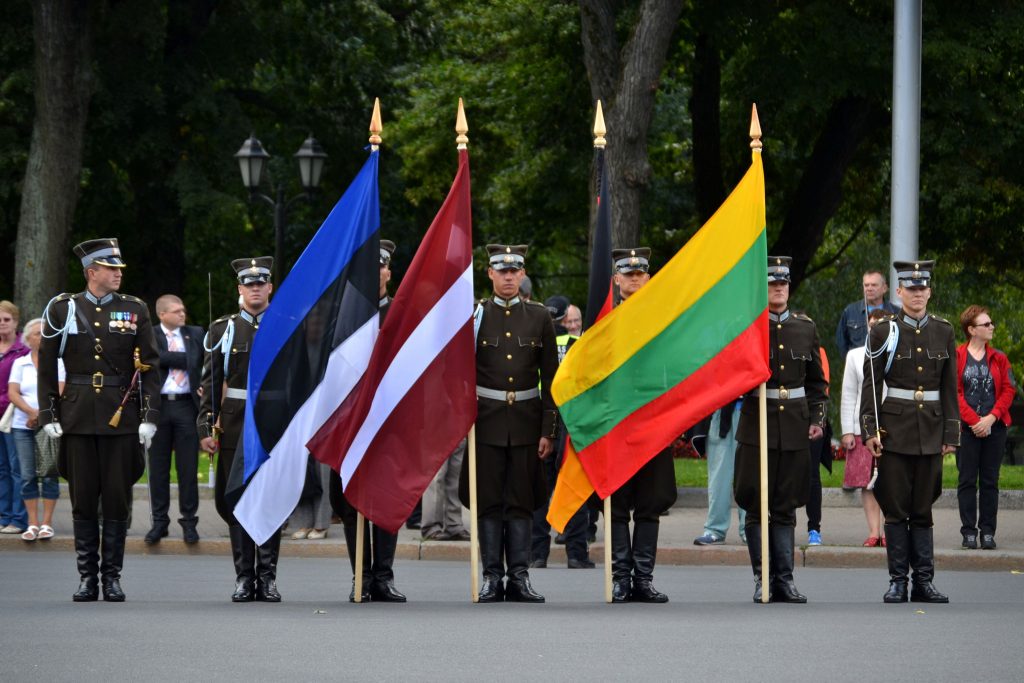
All countries of the region, and particularly Estonia, Latvia, and Lithuania, must intensify efforts in joint procurement. The territory of the Baltic states is a single operational area from a land warfare perspective. The greatest possible interoperability (harmonizing weapons, ammunition, spare parts) is vital. Much success has been accomplished by the Baltic states since 2014, working together on common threat perceptions and common avenues of security cooperation. Those efforts need to expand to include procurement of key platforms needed to secure the region. Accelerated efforts by the three Baltic states in this regard will generate goodwill and political capital for intensified regional cooperation with other countries.
Given the competing demands of North Atlantic and Baltic Sea security, no command structure for the region will satisfy every country. When Finland joined NATO, like Denmark, it was placed under NATO’s Allied Joint Force Command Brunssum (Netherlands), with an intended focus on supporting and defending the Baltics. Norway, however, is under Joint Force Command Norfolk (Virginia, USA), creating a potentially problematic divide between the Nordic countries. At the time of this report publication, it remains to be seen where Sweden will fall but it seems likely the Nordic countries will be divided between Brunssum and Norfolk command structures, presenting the alliance with challenges to cohesively plan and implement both regional and whole-of-alliance security.
All countries in the region must intensify their efforts in providing host nation support. This should be aimed less at hosting permanent military presence from other countries, and more toward enabling a persistent presence of rotating forces and the ability to host reinforcement forces. High-quality accommodation for visiting personnel, hardened infrastructure for storing preposition stocks and equipment, spacious locations for training and exercises, and dual-use civilian infrastructure are all urgently needed. These budget items may be less popular or glamorous than big-ticket weapons systems or new units, but they have a greater overall impact on readiness and effectiveness.
Persistent rotation of regional and other forces, an intensive tempo of hard exercises and regular training, the infrastructure upgrades needed for military mobility, and the changes in daily life required for greater resilience to subthreshold threats will be unfamiliar, disruptive, and potentially unpopular. We recommend an intensive and sustained public messaging program to prepare the civilian population of the region for what lies ahead. Threat awareness in some countries has deteriorated during three decades of complacency. Even in countries that have high degrees of threat awareness, the public in some cases prioritizes convenience, preservation of the natural environment, and an undisturbed lifestyle. Effective defense and decision-making require a common picture of the threat, both among countries and within them.
We therefore recommend that the countries of the region compile a joint annual threat assessment, drawing on classified and open-source data, of the military and subthreshold threats posed by Russia (and other hostile states). This should be published in an unclassified edition for the public, and in a classified form for decision-makers. It should include punchy examples — for example, of espionage activity, subversion, air-space intrusions, and cyberattacks. The (at the time) unprecedented frankness of Estonia’s annual Internal Security Service reviews since 1998 should be a template here. The regional review should include new discoveries about past hostile state activity, and an over-the-horizon section on the dynamic threat picture. Such a review will help build threat awareness among the public and inside the government. Annual publication would add momentum to decision-making, give perspective to assessments of evolving threats, and set benchmarks.

Resilience varies widely across the region. But even countries with the strongest traditions, such as Finland with its “comprehensive security” approach, referred to as “total defense” in Sweden and some other countries, recognize the need to modernize and adapt. We therefore also recommend that the countries of the region publish a joint annual resilience assessment, again in unclassified and classified form. This will help identify regional weak points for remedying and strengths for sharing. It will facilitate informed comparisons among countries and over time.
We further recommend a joint regional resilience program with an appropriate legal and financial framework. It should include resilience exchanges, bilateral and multilateral, in which decision-makers and opinion-formers can experience training, exercises, and routine operations in other countries of the region, and beyond it.
It is also worth noting the inherent susceptibility of NATO to political and geopolitical change. A future US president may be less committed to European defense or be unavoidably distracted by a military crisis involving China. It is possible to imagine in such circumstances that the US commitment to the region would sharply diminish, and that other European powers, such as France and Britain, would be called on to fill the gap, for example, in nuclear defense. This report does not suggest a post-NATO “Plan B” for the Nordic-Baltic region. But the sooner, and the more, that the countries of the region do what is in their power to ensure their own security, the less vulnerable they will be in the event of an unfavorable change in the strategic environment.
All these recommendations, if implemented, will strengthen the security of the Baltic Sea region in resilience, defense, and deterrence. This depends chiefly, however, on NATO and the US security guarantee enshrined in Article 5. Meeting the alliance’s requirements in terms of spending, force posture, exercises, and other respects remains the most important priority. The recommendations outlined here will help solidify the region in the minds of allies as an area that is doing the most to help itself and is thus deserving of outside help, and establish the Nordic-Baltic region as a cooperative, collaborative, and integrated region of Europe and the alliance.
Acknowledgments
We are grateful to the reviewers of this report who shared their thoughts and feedback on various drafts. In particular, we would like to thank CEPA’s distinguished fellows Patrick Turner, Marija Golubeva, and Scott Kindsvater and CEPA’s former visiting fellow Minna Ålander for their feedback. We are also grateful to CEPA’s interns including Grant Turner, Ashley Davis, Will Monahan, and Alexandra Krutel.
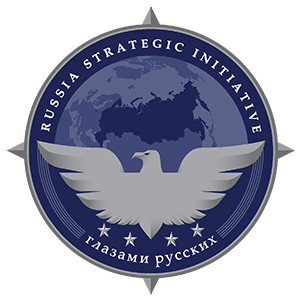
This report was funded by the Russia Strategic Initiative, US European Command. The views expressed in this paper do not necessarily represent the Department of Defense or the United States government.
Methodology
This report examines how Sweden’s and Finland’s accession to NATO impacts Baltic Sea security. The report’s research is drawn from in-person and virtual consultations and interviews with policy experts and current and former government officials, military officers, and academic researchers to capture the changing views in the Nordic-Baltic region during the spring and summer of 2023. (See the appendix for a list of interviewees and workshop participants.) We held two hybrid workshops to solicit thoughts from experts working on Nordic-Baltic issues. The first workshop took place in March 2023 and focused on threats and threat perceptions to the region, and the second workshop was held in May 2023 and focused on resilience measures and capabilities in the region.
- This report deals chiefly with the defense and security problems of Denmark, Estonia, Finland, Latvia, Lithuania, Norway, Poland, and Sweden, which we describe for convenience as the “Baltic Sea region.” These are the countries at most direct risk of attack from Russia. Germany, though a littoral Baltic Sea country, by virtue of its size and history plays a different role. Though these eight countries are all independent nation-states, they are — from a military point of view — a single operational environment. The “Nordics,” or Nordic region, comprise Denmark, Finland, Iceland, Norway, and Sweden. However, Iceland, though a NATO member and part of Nordic Defense Cooperation, plays little direct role in Baltic Sea regional security. The “Baltics,” or “Baltic states” or “Baltic region,” comprise Estonia, Latvia, and Lithuania. Poland, the region’s military heavyweight, plays a major role in the region, but the Baltic Sea is not as commensurately important in Polish defense planning. Nor does this report discuss the security issues involving Greenland and the Faroe Islands, although both feature in Denmark’s defense thinking. [↩]
- Tom Tugendhat et al., “War in Ukraine — the Threat to the Baltic States,” UK Parliament, July 7, 2022, https://www.parliament.uk/business/commons/committee-corridor-podcast/committee-corridor-war-in-ukraine—the-threat-to-the-baltic-states/. [↩]
- Robbie Gramer and Jack Detsch, “Putin Eyes NATO’s Eastern Flank after Ukraine,” Foreign Policy, May 22, 2023, https://foreignpolicy.com/2023/05/22/russia-natobeyond-ukraine-estonia-baltic-eastern-flank-military-threat/. [↩]
- Ben Hodges, Edward Lucas, and Carsten Schmiedl, Close to the Wind: Baltic Sea Regional Security, Center for European Policy Analysis, September 2021, https://cepa.org/comprehensive-reports/close-to-the-wind-executive-summary/. [↩]
- Edward Lucas, The Coming Storm: Baltic Sea Security Report, Center for European Policy Analysis, June 2015, https://cepa.org/article/the-coming-storm/. [↩]
- Lennart Meri, “Address by H.E. Lennart Meri, President of the Republic of Estonia, at a Matthiae-Supper in Hamburg on February 25, 1994,” Hamburg, Germany, Speeches of the President of the Republic 1992-2001, February 25, 1994, https://vp1992-2001.president.ee/eng/k6ned/K6ne.asp?ID=9401. [↩]
- Pekka Vanttinen, “Finland Goes Missile Shopping, Moors Itself to Western Security Structures,” Euractiv, March 7, 2022, https://www.euractiv.com/section/politics/short_news/finland-goes-missile-shopping-moors-itself-to-western-security-structures/. [↩]
- “Finland Signs F-35 Fighter Jet Deal,” YLE News, February 11, 2022, https://yle.fi/a/3-12314148. [↩]
- Essi Lehto and Mike Stone, “Finland orders 64 Lockheed F-35 fighter jets for $9.4 bln,” Reuters, December 10, 2021, https://www.reuters.com/business/aerospace-defense/lockheed-f-35-jet-wins-finnish-fighter-competition-source-2021-12-10/. [↩]
- Seth Frantzman, “Finland to Buy Israel’s David’s Sling Air Defense System,” Defense News, April 7, 2023, https://www.defensenews.com/global/europe/2023/04/07/finland-to-buy-israels-davids-sling-air-defense-system/. [↩]
- Nathan Gain, “Finnish Navy Receives 2nd Modernized Hamina-Class Missile Boat,” Naval News, December 14, 2020, https://www.navalnews.com/naval-news/2020/12/finnish-navy-receives-2nd-modernized-hamina-class-missile-boat/. [↩]
- Linda Kay, “Patria Signs $205M Deal to Upgrade Finland’s Hamina-Class Fast Attack Crafts,” Defense World, January 5, 2018, https://www.defenseworld.net/2018/01/05/patria-signs-205m-deal-to-upgrade-finlands-hamina-class-fast-attack-crafts.html. [↩]
- “Self-Propelled Howitzer K9 Thunder — Maavoimat,” The Finnish Defence Forces, n.d., https://maavoimat.fi/en/self-propelled-howitzer-k9-thunder, accessed July 2023. [↩]
- Richard Tomkins, “Finland Is Acquiring Used Howitzers from South Korea,” UPI, February 20, 2017, https://www.upi.com/Defense-News/2017/02/20/Finland-buying-secondhand-howitzers-from-South-Korea/6671487618451/. [↩]
- “Finland – Extended Range Guided Multiple Launch Rocket System,” Defense Security Cooperation Agency, February 17, 2021, https://www.dsca.mil/press-media/major-arms-sales/finland-extended-range-guided-multiple-launch-rocket-system. [↩]
- “Frequently Asked NATO-Questions,” Ministry of Foreign Affairs of Finland, https://um.fi/frequently-asked-nato-question, accessed July 2023. [↩]
- “Finnish President: Putin’s Mask Comes off, Showing ‘Cold Face of War,’” YLE News, February 24, 2022, https://yle.fi/a/3-12332089. [↩]
- “Sweden’s Path to NATO Membership,” Government Offices of Sweden, April 5, 2023, https://www.government.se/government-policy/sweden-and-nato/swedens-road-to-nato/. [↩]
- Ministry for Foreign Affairs of Finland, Government Report on Changes in the Security Environment, Government of Finland, 2022, https://julkaisut.valtioneuvosto.fi/bitstream/handle/10024/164002/VN_2022_20.pdf. [↩]
- Outcome of the Negotiations on the Government Programme, 16 June 2023, A Strong and Committed Finland, Excerpts, Government of Finland, 2023, https://valtioneuvosto.fi/documents/10184/158702198/Excerpts+of+the+outcome+of+the+negotiations+on+the+Government+Programme+16+June+2023.pdf/f6c8c388-26c8-2712-4996-789b511a37ec/Excerpts+of+the+outcome+of+the+negotiations+on+the+Government+Programme+16+June+2023.pdf?t=1686921846994. [↩]
- Joona Aaltonen HS, “Suomella on edessä neljä ulkopolitiikan ponnistusta, arvioi konkaridiplomaatti,” Helsingin Sanomat, May 26, 2023, https://www.hs.fi/politiikka/art-2000009571245.html. [↩]
- Ledarredaktionen, “Sverige är fortfarande på tok för fredsskadat,” Expressen, April 11, 2023, https://www.expressen.se/ledare/sverige-ar-fortfarande-pa-tok-for-fredsskadat/. [↩]
- “The Swedish Defence Commission Has Submitted a Midterm Report to the Minister for Defence Pål Jonson,” Government Offices of Sweden, April 26, 2023, https://www.government.se/articles/2023/04/the-swedish-defence-commission-has-submitted-a-midterm-report-to-the-minister-for-defence-pal-jonson/. [↩]
- Kontrollstation 2023, Regeringskansliet Försvarsdepartementet, 2023, https://www.regeringen.se/contentassets/9ff31e019bb54a738aef9125f098eacb/kontrollstation-2023-ds-202312.pdf. [↩]
- Richard Nordgren, “Det går långsamt när Sverige bygger upp försvaret igen — ‘vi är fredsskadade,’” HBL, May 18, 2023, https://www.hbl.fi/artikel/021abb9b-3d66-426f-bdc7-e3e82e46e290. [↩]
- “The Swedish Defence Commission Submits Its Report on Sweden’s Security Policy to Minister for Defence Pål Jonson,” Government Offices of Sweden, June 19, 2023, https://www.government.se/articles/2023/06/the-swedish-defence-commission-submits-its-report-on-swedens-security-policy-to-minister-for-defence-pal-jonson/. [↩]
- Terrance Rhodes, “Sweden Becomes First Non-NATO Partner with Patriot,” US Army, November 23, 2021, https://www.army.mil/article/252241/sweden_becomes_first_non_nato_partner_with_patriot. [↩]
- Valius Venckunas, “Sweden to Upgrade Its Entire Gripen Fleet,” AeroTime, December 18, 2022, https://www.aerotime.aero/articles/sweden-to-upgrade-its-entire-gripen-fleet. [↩]
- “Saab Receives Order for NLAW from Sweden,” Saab, December 15, 2022, https://www.saab.com/markets/norway/press-releases/saab-receives-order-for-nlaw-from-sweden. [↩]
- “Swedish FMV to Procure Next Generation Light Anti-tank Weapon,” Army Technology, December 16, 2022, https://www.army-technology.com/news/swedish-fmv-to-procure-next-generation-light-anti-tank-weapon/. [↩]
- Rojoef Manuel, “Sweden, Finland Ink Joint Firearms Procurement from Sako,” The Defense Post, March 31, 2023, https://www.thedefensepost.com/2023/03/31/sweden-finland-firearms-procurement-sako/. [↩]
- Vivienne Machi, “Sweden Orders 20 Armored Vehicles under Joint European Program,” Defense News, April 17, 2023, https://www.defensenews.com/global/europe/2023/04/17/sweden-orders-20-armored-vehicles-under-joint-european-program/. [↩]
- “Our History,” Norwegian Armed Forces, October 8, 2021, https://www.forsvaret.no/en/about-us/our-history. [↩]
- “Norwegian Defence Commission Proposes New Level of Ambition,” Forsvarskommisjonen, May 4, 2023, https://forsvarskommisjonen.no/2023/05/04/norwegian-defence-commission-proposes-new-level-of-ambition/. [↩]
- Alexander Beadle, “Tre Nye Strategiske Sjokk for Norsk Forsvarsplanlegging,” Forsvarskommisjonen, June 2022, https://files.nettsteder.regjeringen.no/wpuploads01/sites/495/2022/09/Tre-nye-strategiske-sjokk-for-norsk-forsvarsplanlegging-Beadle.pdf. [↩]
- Jim Garamone, “New Strategy Seeks to Reinvigorate Deterrence in a Changing World,” US Department of Defense, November 7, 2022, https://www.defense.gov/News/News-Stories/Article/Article/3212005/new-strategy-seeks-to-reinvigorate-deterrence-in-a-changing-world. [↩]
- “Norway to Privatize Non-core Military Support Services,” Defense News, December 16, 2020, https://www.defensenews.com/2016/12/16/norway-to-privatize-non-core-military-support-services/. [↩]
- Tim Martin, “With $1.9B Buy, Norway Puts Faith in Leopard to End Bitter Tank Utility Debate,” Breaking Defense, February 7, 2023, https://breakingdefense.com/2023/02/with-1-9b-buy-norway-puts-faith-in-leopard-to-end-bitter-tank-utility-debate/. [↩]
- “Norway Signs Deal with US to Procure AMRAAM-D Missiles for F-35 Jets,” Airforce Technology, November 17, 2022, https://www.airforce-technology.com/news/norway-us-amraamd-missiles-f35/. [↩]
- “Kongsberg, NDMA Sign Deal to Provide More NSMs to Norway,” Naval Technology, December 23, 2022, https://www.naval-technology.com/news/kongsberg-ndma-additional-nsms/. [↩]
- “Norway Buys Polish Piorun MANPADS in $35M Deal,” Defense Brief, November 29, 2022, https://defbrief.com/2022/11/29/norway-buys-polish-piorun-manpads-in-35m-deal/. [↩]
- “Chapter Four: Europe,” The Military Balance 123, no. 1 (February 14, 2023): 69, https://doi.org/10.1080/04597222.2023.2162716. [↩]
- Danish Security and Defence Towards 2035, The Security Policy Analysis Group, September 2022, https://www.fmn.dk/globalassets/fmn/dokumenter/strategi/rsa/-regeringens_security-policy-report_uk_web-.pdf. [↩]
- “Foreign and Security Policy Strategy 2023,” Ministry of Foreign Affairs of Denmark, 2023, https://um.dk/en/foreign-policy/foreign-and-security-policy-2023. [↩]
- “Foreign and Security Policy Strategy 2023,” Ministry of Foreign Affairs of Denmark, 2023, https://um.dk/en/foreign-policy/foreign-and-security-policy-2023. [↩]
- James Sherr, “Pipes and Mirrors: The Nord Stream Explosions,” International Centre for Defence and Security, April 28, 2023, https://icds.ee/en/pipes-and-mirrors-the-nord-stream-explosions/. [↩]
- Xavier Vavasseur, “New Naval Vessels for Denmark,” Naval News, June 23, 2023, https://www.navalnews.com/naval-news/2023/06/new-naval-vessels-for-denmark/. [↩]
- “Denmark to Invest $5.5 Billion in New Warships,” Reuters, August 18, 2022, https://www.reuters.com/world/europe/denmark-invest-55-billion-navy-2022-08-18/. [↩]
- Ronald Watkins, “F-35s to Operate out of Denmark for First Time,” The Defense Post, March 8, 2023, https://www.thedefensepost.com/2023/03/08/f35s-operate-denmark/. [↩]
- Jacob Gronholt-Pedersen and Nikolaj Skydsgaard, “Denmark Backs Lockheed Martin’s F-35 for $3 Billion Fighter Jet Deal,” Reuters, May 12, 2016, https://www.reuters.com/article/us-denmark-defence-lockheed/denmark-backs-lockheed-martins-f-35-for-3-billion-fighter-jet-deal-idUSKCN0Y30VC. [↩]
- Lee Willett, “Denmark Begins Procurement Process to Deliver New Capabilities for Arctic Operations,” Naval News, February 13, 2023, https://www.navalnews.com/naval-news/2023/02/denmark-begins-procurement-process-to-deliver-new-capabilities-for-arctic-operations/. [↩]
- “Denmark to Boost Spending on Arctic Defence, Surveillance,” Reuters, February 10, 2021, https://www.reuters.com/article/denmark-defence-arctic/denmark-to-boost-spending-on-arctic-defence-surveillance-idUSC7N2DT024. [↩]
- Thomas Lauge Nielsen, “Royal Danish Army Selects Skyranger 30,” European Security & Defence, May 17, 2023, https://euro-sd.com/2023/05/news/31568/royal-danish-army-selects-skyranger-30/. [↩]
- Mariusz Antoni Kamiński and Zdzisław Śliwa, “Poland’s Threat Assessment: Deepened, Not Changed,” National Defense University Press, March 10, 2023, https://ndupress.ndu.edu/Media/News/News-Article-View/Article/3323942/polands-threat-assessment-deepened-not-changed. [↩]
- “Poland Blocks Hundreds of Migrants at Belarus Border,” BBC News, November 8, 2021, https://www.bbc.com/news/world-europe-59206685. [↩]
- Monika Scislowska and Yuras Karmanau, “Why Tensions Have Been Growing along NATO’s Eastern Border with Belarus,” PBS NewsHour, August 15, 2023, https://www.pbs.org/newshour/world/why-tensions-have-been-growing-along-natos-easternborder-with-belarus. [↩]
- “Analysis: Poland Aims to Become First European Military Force and the Shield against Russia,” Army Recognition, May 3, 2023, https://www.armyrecognition.com/weapons_defence_industry_military_technology_uk/analysis_poland_aims_to_become_first_european_military_forces_and_the_shield_against_russia.html. [↩]
- Głowacki, “Poland Buying 96 AH-64E Apaches, as Modernization Spending Spree Continues.” [↩]
- Bartosz Głowacki, “Poland Buying 96 AH-64E Apaches, as Modernization Spending Spree Continues,” Breaking Defense, September 8, 2022, https://breakingdefense.com/2022/09/poland-buying-96-ah-64e-apaches-as-modernization-spending-spree-continues/. [↩]
- Joseph Trevitchick and Thomas Newdick, “Surprise Polish Plans For Mammoth 96 AH-64E Apache Order Announced,” The Drive, September 8, 2022, https://www.thedrive.com/the-war-zone/surprise-polish-plans-for-mammoth-96-ah-64e-apache-order-announced. [↩]
- Mike Stone and Rhea Binoy, “U.S. Approves up to $10 Bln Sale of HIMARS Rocket Launchers, Ammunition to Poland,” Reuters, February 7, 2023, https://www.reuters.com/business/aerospace-defense/us-approves-sale-up-10-bln-sale-himars-rocket-launchers-ammunition-poland-2023-02-07/. [↩]
- Peter Kononczuk, “Poland to Buy 288 Rocket Artillery Launchers from South Korea,” Notes from Poland, October 20, 2022, https://notesfrompoland.com/2022/10/20/Poland-to-buy-288-rocket-artillery-launchers-from-south-korea/. [↩]
- “Poland Signs $6 Billion Deal for 288 Chunmoo ‘Korean HIMARS’ Rocket Artillery Systems and Ballistic Missiles,” Military Watch Magazine, October 21, 2022, https://militarywatchmagazine.com/article/poland-signs-6-billion-deal-for-288-chunmoo-korean-himars-rocket-artillery-systems-and-ballistic-missiles. [↩]
- Alicja Ptak, “Poland to Buy Fighter Planes, Howitzers and Tanks from South Korea,” Notes from Poland, July 23, 2022, https://notesfrompoland.com/2022/07/23/poland-to-buy-fighter-planes-howitzers-and-tanks-from-south-korea/. [↩]
- Jaroslaw Adamowski, “Poland Signs $4.75 Billion Abrams Tank Deal as Russia’s War Speeds Procurements,” Defense News, April 5, 2022, https://www.defensenews.com/global/europe/2022/04/05/poland-signs-475-billion-abrams-tank-deal-as-russias-war-speeds-procurements/. [↩]
- Jaroslaw Adamowski, “Poland Inks $4.6 Billion Contract for F-35 Fighter Jets,” Defense News, January 31, 2020, https://www.defensenews.com/global/europe/2020/01/31/poland-inks-46-billion-contract-for-f-35-fighter-jets/. [↩]
- Aleksandra Krzysztoszek, “Poland Relocates Its Patriot Missiles to Warsaw,” Euractiv, February 7, 2023, https://www.euractiv.com/section/politics/news/poland-relocates-its-patriot-missiles-to-warsaw/. [↩]
- “Babcock Selected as the Platform Design Provider and Technology Partner for Poland’s New Frigate Programme,” Babcock International, March 4, 2022, https://www.babcockinternational.com/news/babcock-selected-as-the-platform-design-provider-and-technology-partner-for-polands-new-frigate-programme/. [↩]
- Jaroslaw Adamowski, “Poland Shortlists Babcock, Thyssenkrupp for $2 Billion Frigate Program,” Defense News, February 15, 2022, https://www.defensenews.com/global/europe/2022/02/15/poland-shortlists-babcock-thyssenkrupp-for-2-billion-frigate-program/. [↩]
- National Security Strategy of the Republic of Poland, National Security Bureau of Poland, May 12, 2020, https://www.bbn.gov.pl/ftp/dokumenty/National_Security_Strategy_of_the_Republic_of_Poland_2020.pdf. [↩]
- Kamiński and Śliwa, “Poland’s Threat Assessment: Deepened, Not Changed.” [↩]
- Annalena Baerbock, “Russia’s War on Ukraine Has Forced Us in Germany to Think Differently about Our Role in the World,” The Guardian, July 6, 2023, https://www.theguardian.com/world/commentisfree/2023/jul/06/russia-war-ukraine-germany-foreign-policy. [↩]
- Taegan Goddard, “Realpolitik,” in Political Dictionary, n.d., https://politicaldictionary.com/words/realpolitik/, accessed July 2023. [↩]
- Aylin Matlé, “Making Germany’s Military Fit for Purpose,” Internationale Politik Quarterly, February 27, 2023, https://ip-quarterly.com/en/making-germanys-military-fit-purpose. [↩]
- Holger Hansen, “German Lawmakers Approve 100 Billion Euro Military Revamp,” Reuters, June 3, 2022, https://www.reuters.com/world/europe/german-lawmakers-approve-100-bln-euro-military-revamp-2022-06-03/#:~:text=BERLIN%2C%20June%203%20(Reuters),to%20Russia’s%20invasion%20of%20Ukraine. [↩]
- “Germany unveils increased defense budget,” Defense News, July 5, 2023, https://www.defensenews.com/global/europe/2023/07/05/germany-unveils-increased-defense-budget/. [↩] [↩]
- National Security Strategy, Federal Foreign Office of Germany, June 2023, https://www.nationalesicherheitsstrategie.de/en.html. [↩]
- Guy Chazan and Laura Pitel, “Germany’s First-Ever Security Strategy Names Russia as ‘Greatest Threat’ to Peace,” Financial Times, June 14, 2023, https://www.ft.com/content/3e676d13-ee86-402e-b47b-f7ef6424838a. [↩]
- “With Eyes on Russia, Germany Ready to Station Troops Permanently in Lithuania,” Reuters, June 26, 2023, https://www.reuters.com/world/europe/germany-ready-permanent-brigade-presence-nato-member-lithuania-2023-06-26/. [↩]
- “Germany Approves $8.83Bn to Buy 35 F-35 Jets from Lockheed Martin,” Airforce Technology, December 15, 2022, https://www.airforce-technology.com/news/germany-buy-f35-lockheed-martin/. [↩]
- Mike Stone, “US State Department Approves Potential Sale of Chinook Helicopters to Germany, Pentagon Says,” Reuters, May 11, 2023,https://www.reuters.com/business/aerospace-defense/us-state-department-approves-potential-sale-chinook-helicopters-germany-pentagon-2023-05-11/. [↩]
- Peter Wuetherich, “Germany Okays $4.3 Billion Purchase of Israel’s Arrow 3 Anti-missile System,” Times of Israel, June 14, 2023, https://www.timesofisrael.com/germany-okays-4-3-billion-purchase-of-israels-arrow-3-anti-missile-system/. [↩]
- “Germany to Buy 50 More Puma Fighting Vehicles for 1.5 Bln Euros,” Reuters, May 10, 2023, https://www.reuters.com/business/aerospace-defense/germany-buy-50-additional-puma-fighting-vehicles-15-bln-euros-sources-2023-05-10/. [↩]
- “Bundestag Approves Additional Funds for P-8A Poseidon MPA Procurement,” Naval News, July 11, 2022, https://www.navalnews.com/naval-news/2022/07/bundestag-approves-additional-funds-for-p-8a-poseidon-mpa-procurement/. [↩]
- Sebastian Sprenger, “German Lawmakers Greenlight $344 Million Support Package for Future P-8 Fleet,” Defense News, July 12, 2022, https://www.defensenews.com/global/europe/2022/07/12/german-lawmakers-green-light-344-million-support-package-for-future-p-8-fleet/. [↩]
- Kanjyik Ghosh, “Germany to buy 18 Leopard 2 tanks to replenish stocks – sources,” Reuters, May 12, 2023, https://www.reuters.com/world/europe/germany-aims-buy-18-leopard-2-tanks-545-mln-euros-source-2023-05-12/. [↩]
- Martin Hurt et al., Baltic Defence Development: Adding Value to the Defence of the Baltic Sea Region, International Centre for Defence and Security, March 20, 2023, https://icds.ee/en/baltic-defence-development-adding-value-to-the-defence-of-the-baltic-sea-region/. [↩]
- Joe Gould, “Lithuania Signs $495 Million Deal to Buy HIMARS, ATACMs,” Defense News, December 16, 2022, https://www.defensenews.com/pentagon/2022/12/16/lithuania-signs-495-million-deal-to-buy-himars-atacms/. [↩] [↩]
- Jaroslaw Adamowski, “Latvia to Boost Defense Spending with Naval Missile, HIMARS Deals,” Defense News, February 14, 2023, https://www.defensenews.com/global/europe/2023/02/14/latvia-to-boost-defense-spending-with-naval-missile-himars-deals/. [↩]
- “Joint Procurement Makes Baltic Defensive Capabilities More Robust,” Ministry of National Defence of the Republic of Lithuania, March 28, 2023, https://kam.lt/en/joint-procurement-makes-baltic-defensive-capabilities-more-robust/. [↩]
- “Estonia and Latvia to Begin Medium-Range Air Defence Procurement Negotiations with German Manufacturer,” Republic of Estonia Ministry of Defence, May 21, 2023, https://www.kaitseministeerium.ee/en/news/estonia-and-latvia-begin-medium-range-air-defence-procurement-negotiations-german-manufacturer. [↩]
- “The National Security Concept Presented by the Prime Minister Is Approved in the Riigikogu,” Government Communication Unit of the Republic of Estonia, February 22, 2023, https://www.valitsus.ee/en/news/national-security-concept-presented-prime-minister-approved-riigikogu. [↩]
- Elisabeth Gosselin-Malo, “Estonia’s Global Arms Buying Spree Seeks Drastic Combat Gains,” Defense News, June 13, 2023, https://www.defensenews.com/global/europe/2023/06/13/estonias-global-arms-buying-spree-seeks-drastic-combat-gains/. [↩]
- “Annual Reviews,” Estonian Internal Security Service, n.d., https://kapo.ee/en/content/annual-reviews/, accessed July 2023. [↩]
- “Policy Planning,” Ministry of Defence of the Republic of Latvia, n.d., https://www.mod.gov.lv/en/nozares-politika/policy-planning, accessed July 2023. [↩]
- 2022 Annual Report, Constitution Protection Bureau of the Republic of Latvia, 2022, https://www.sab.gov.lv/files/Public_report_2022.pdf. [↩]
- Hurt et al., “Baltic Defence Development: Adding Value to the Defence of the Baltic Sea Region.” [↩]
- National Threat Assessment 2023, Defence Intelligence and Security Service under the Ministry of National Defence, State Security Department of the Republic of Lithuania, 2023, https://www.vsd.lt/en/reports/national-threat-assessment-2023/. [↩]
- National Threat Assessment 2022, Defence Intelligence and Security Service under the Ministry of NationalDefence, State Security Department of the Republic of Lithuania, 2022, https://www.vsd.lt/wp-content/uploads/2022/04/ANGL-el-_.pdf. [↩]
- “Estonia and Latvia to Begin Medium-Range Air Defence Procurement Negotiations with German Manufacturer,” Republic of Estonia Ministry of Defence, May 21, 2023, https://www.kaitseministeerium.ee/en/news/estonia-and-latvia-begin-medium-range-air-defence-procurement-negotiations-german-manufacturer. [↩]
- Olevs Nikers, “Latvia and Estonia Agree to Joint Acquisition of IRIS-T Air Defense Systems — Jamestown,” Eurasia Daily Monitor 20, no. 99 (June 20, 2023), https://jamestown.org/program/latvia-and-estonia-agree-to-joint-acquisition-of-iris-t-air-defense-systems/. [↩]
- “Estonia Signs 5-Way Cooperation Agreement for Acquisition of Air Defense Missiles,” The Baltic Times, June 20, 2023, https://www.baltictimes.com/estonia_signs_5-way_cooperation_agreement_for_acquisition_of_air_defense_missiles/. [↩]
- “France’s European Mistral Missile Order Worth 500 Million Euros, Ministry Says,” Reuters, June 20, 2023, https://www.reuters.com/business/aerospace-defense/frances-european-mistral-missile-order-worth-500-mln-euros-ministry-2023-06-20/. [↩]
- “Estonia to Buy US Rocket Artillery System in $200M Deal,” AP News, December 3, 2022, https://apnews.com/article/nato-europe-business-estonia-lockheed-martin-corp-4a0a7ac40ec0234e6cde5e00c6249a4e. [↩]
- “Estonia to Get Blue Spear Anti-ship Missile Systems,” Defense Here, September 10, 2021, https://www.defensehere.com/en/estonia-to-get-blue-spear-anti-ship-missile-systems. [↩]
- Elisabeth Gosselin-Malo, “Estonia’s Global Arms Buying Spree Seeks Drastic Combat Gains,” Defense News, June 13, 2023, https://www.defensenews.com/global/europe/2023/06/13/estonias-global-arms-buying-spree-seeks-drastic-combat-gains/. [↩]
- Dan Arkin, “Estonia Buys Spike LR Missiles in $45 Million Deal,” Israel Defense, June 23, 2019, https://www.israeldefense.co.il/en/node/39062. [↩]
- “Estonia and Poland Sign Agreement to Buy Short-Range Air Defense Systems,” Baltic News Network, September 8, 2022, https://bnn-news.com/estonia-and-poland-sign-agreement-to-buy-short-range-air-defense-systems-238248. [↩]
- Nikers, “Latvia and Estonia Agree to Joint Acquisition of IRIS-T Air Defense Systems — Jamestown.” [↩]
- Hercules Reyes, “Latvia Orders 200+ 6×6 Armored Vehicles from Finnish Company,” The Defense Post, September 2, 2021, https://www.thedefensepost.com/2021/09/02/latvia-armored-vehicles-patria/. [↩]
- Jaroslaw Adamowski, “Latvian Government Approves $110 Million Naval Strike Missile Buy,” Defense News, May 5, 2023, https://www.defensenews.com/global/europe/2023/05/05/latvian-government-approves-110-million-naval-strike-missile-buy/. [↩]
- “Latvia Places Order with Saab for Carl-Gustaf Ammunition,” Army Technology, December 21, 2022, https://www.army-technology.com/news/latvia-saab-carl-gustaf-ammunition/. [↩]
- Christopher Petrov, “Estonia Orders Piorun MANPADS,” Janes, September 13, 2022, https://www.janes.com/defence-news/news-detail/mspo-2022-estonia-orders-piorun-manpads. [↩]
- Joe Saballa, “Lithuania to Acquire US, German Weapons for $1 Billion,” The Defense Post, April 11, 2022, https://www.thedefensepost.com/2022/04/11/lithuania-us-german-weapons/. [↩]
- “Lithuania and the U.S. Signed a Contract on Procurement of a New UH-60 Black Hawk Helicopter Platform from the U.S. Government,” Ministry of National Defence of the Republic of Lithuania, November 13, 2020, https://kam.lt/en/lithuania-and-the-u-s-signed-a-contract-on-procurement-of-a-new-uh-60-black-hawk-helicopter-platform-from-the-u-s-government/. [↩]
- Jaroslaw Adamowski, “Lithuania Buys Switchblade 600 Drones,” Defense News, December 23, 2022, https://www.defensenews.com/unmanned/2022/12/23/lithuania-buys-switchblade-600-drones/. [↩]
- “Lithuanian Military to Purchase More Javelin Missiles from US,” Lietuvos Nacionalinis Radijas Ir Televizija, March 10, 2022, https://www.lrt.lt/en/news-in-english/19/1641039/lithuanian-military-to-purchase-more-javelin-missiles-from-us#:~:text=The%20Lithuanian%20military%20will%20buy,amendment%20with%20the%20US%20administration. [↩]
- “Lithuania Orders More Carl-Gustaf Ammunition from Saab,” Army Technology, March 6, 2023, https://www.army-technology.com/news/lithuania-carl-gustaf-ammunition-saab/. [↩]
- Dylan Malyasov, “Lithuania to Buy More Vilkas Infantry Fighting Vehicles,” Defence Blog, May 7, 2023, https://defence-blog.com/lithuania-to-buy-more-vilkas-infantry-fighting-vehicles/. [↩]
- Jaroslaw Adamowski, “Lithuania Launches Talks to Buy More than 120 Boxer Military Vehicles,” Defense News, April 21, 2022, https://www.defensenews.com/land/2022/04/21/lithuania-launches-talks-to-buy-more-than-120-boxer-military-vehicles/. [↩]
- “Third Shipment of Joint Light Tactical Vehicles JLTV Arrived in Lithuania,” Ministry of National Defence Republic of Lithuania, May 22, 2023, https://kam.lt/en/third-shipment-of-joint-light-tactical-vehicles-jltv-arrived-in-lithuania/. [↩]
- Joshua Askew, “Ex Russian PM Dmitry Medvedev Claims Baltic Countries Belong to Russia,” Euronews, May 18, 2023, https://www.euronews.com/2023/05/17/russias-dmitry-medvedev-claims-baltic-countries-belong-to-russia; Brendan Cole, “Russian TV Suggests Finland, Poland, Baltics Want to Rejoin ‘Mother Russia,’” Newsweek, April 13, 2023, https://www.newsweek.com/russia-mother-finland-poland-baltics-solovyov-1794101. [↩]
- Māris Andžāns and Andris Sprūds, “Willingness to Defend One’s Own Country and to Resist in the Baltic States,” Security and Defence Quarterly, September 30, 2020, https://doi.org/10.35467/sdq/124712. [↩]
- The 2016 Warsaw summit committed each member country to boost its civil preparedness. It listed seven baseline requirements: resilient energy supplies; ability to deal effectively with uncontrolled movement of people; resilient food and water resources; ability to deal with mass casualties; resilient civil communications systems; and resilient civil transportation systems. [↩]
- “Vilnius Summit Communiqué,” North Atlantic Treaty Organization, July 11, 2023, https://www.nato.int/cps/en/natohq/official_texts_217320.htm. [↩]
- “Resilience, Civil Preparedness and Article 3,” North Atlantic Treaty Organization, September 20, 2022, https://www.nato.int/cps/en/natohq/topics_132722.htm. [↩]
- “Comprehensive Security,” The Security Committee, n.d., https://turvallisuuskomitea.fi/en/comprehensive-security/,accessed July 2023. [↩]
- “Funding and Legislation,” National Emergency Supply Agency, n.d., https://www.huoltovarmuuskeskus.fi/en/organisation/funding-and-legislation, accessed July 2023 [↩]
- “Civil Defence Shelters Would Be Used during Military Threat,” Ministry of the Interior of Finland, n.d., https://intermin.fi/en/rescue-services/preparedness/civil-defence-shelters, accessed July 2023. [↩]
- “National Defence Courses,” National Defence University, n.d., https://maanpuolustuskorkeakoulu.fi/en/national-defence-courses#:~:text=The%20goal%20of%20the%20National,various%20fields%20of%20comprehensive%20security, accessed July 2023. [↩]
- Support and Cooperation: A Description of the Total Defence in Norway, Norwegian Ministry of Defence and Norwegian Ministry of Justice and Public Security, 2018, https://www.regjeringen.no/contentassets/5a9bd774183b4d548e33da101e7f7d43/support-and-cooperation.pdf. [↩]
- Piotr Szymański, New Ideas for Total Defense: Comprehensive Security in Finland and Estonia, Centre for eastern Studies, March 2020, http://aei.pitt.edu/103309/1/OSW%2DReport_New%2Dideas%2Dfor%2Dtotal%2Ddefence_net_0.pdf. [↩]
- “Annual Reviews,” Kaitsepolitseiamet, n.d., https://kapo.ee/en/content/annual-reviews/, accessed July 2023. [↩]
- Rain Ottis, “Analysis of the 2007 Cyber Attacks against Estonia from the Information Warfare Perspective,” Proceedings of the 7th European Conference on Information Warfare and Security, 2008, https://ccdcoe.org/uploads/2018/10/Ottis2008_AnalysisOf2007FromTheInformationWarfarePerspective.pdf. [↩]
- Adéla Klečková, “The Role of Cyber ‘Elves’ against Russian Information Operations,” The German Marshall Fundof the United States, January 28, 2022, https://www.gmfus.org/news/role-cyber-elves-against-russian-information-operations. [↩]
- Ministry of the Interior, “Nordic Cooperation in Civil Preparedness Is Now More Important than Ever Before,” Government of Finland, December 2, 2022, https://valtioneuvosto.fi/en/-//1410869/nordic-cooperation-in-civil-preparedness-is-now-more-important-than-ever-before. [↩]
- Mikael Wigell, Mariette Hägglund, Christian Fjäder, Emma Hakala, Johanna Ketola, and Harri Mikkola, Nordic Resilience: Strengthening Cooperation on Security of Supply and Crisis Preparedness, Finnish Institute of International Affairs, September 2022, https://www.fiia.fi/wp-content/uploads/2022/09/report70_nordic-resilience_strengthening-cooperation-on-security-of-supply-and-crisis-preparedness.pdf. [↩]
- “Airiston Helmi Financial Crimes Case Heads to Court in December 2023,” YLE News, October 18, 2022, https://yle.fi/a/3-12662132. [↩]
- Matti Tanner, “Ex-puolustusministeri Jussi Niinistö puhuu nyt jättimäisestä Airiston Helmi -operaatiosta: Kiinnitti huomiota outoon yksityiskohtaan,” Iltalehti, January 28, 2023, https://www.iltalehti.fi/kotimaa/a/251b5ea9-55cd-4208-a722-b7b14cf2f012. [↩]
- Mikael Wigell, Mariette Hägglund, Christian Fjäder, Emma Hakala, Johanna Ketola, and Harri Mikkola, Nordic Resilience: Strengthening Cooperation on Security of Supply and Crisis Preparedness, Finnish Institute of International Affairs, September 2022,https://www.fiia.fi/wp-content/uploads/2022/09/report70_nordic-resilience_strengthening-cooperation-on-security-of-supply-and-crisis-preparedness.pdf. [↩]
- “Rail Baltica, Trans Europe,” Railway Technology, n.d., https://www.railway-technology.com/projects/rail-baltica-trans-europe/#catfish. [↩]
- Andrius Sytas, “Russian Citizens Take Language Test to Avoid Expulsion from Latvia,” Reuters, May 9, 2023, https://www.reuters.com/world/europe/russians-take-language-test-avoid-expulsion-latvia-2023-05-08/. [↩]
- Agust Börjesson, “Sweden and China: Once Bitten, Twice Shy,” Institute for Security and Development Policy, April 13, 2023, https://isdp.eu/sweden-and-china-once-bitten-twice-shy/; Sebastian Skov Andersen, “Meet the Danish Politicians Wanted by Hong Kong for Helping Lawmaker Ted Hui Flee the City,” Hong Kong Free Press, January 24, 2021, https://hongkongfp.com/2021/01/24/meet-the-danish-politicians-wanted-by-hong-kong-for-helping-lawmaker-ted-hui-flee-the-city/. [↩]
- Akbar Shahid Ahmed, “Tiny Lithuania Could Change How the World Handles China,” HuffPost UK, December 14, 2022, https://www.huffingtonpost.co.uk/entry/lithuania-china-taiwan_n_63922451e4b09e0de4911c96. [↩]
- “The Swedish Security Service 2022-2023,” Swedish Security Service, 2022, https://www.sakerhetspolisen.se/download/18.3222e1b7187a064b07057/1682587027358/SP_Årsbok_2022_Eng_Accessible.pdf. [↩]
- Gramer and Detsch, “Putin Eyes NATO’s Eastern Flank after Ukraine.” [↩]
- David A. Ochmanek et al., “Inflection Point: How to Reverse the Erosion of U.S. and Allied Military Power and Influence,” RAND Corporation, 2023, https://www.rand.org/pubs/research_reports/RRA2555-1.html. [↩]
- Gerard O’Dwyer, “Nordic Nations Move to Link Air Forces into 250-Strong Aircraft Fleet,” Defense News, March 24, 2023, https://www.defensenews.com/global/europe/2023/03/24/nordic-countries-move-toward-linking-their-air-forces-250-planes/. [↩]


